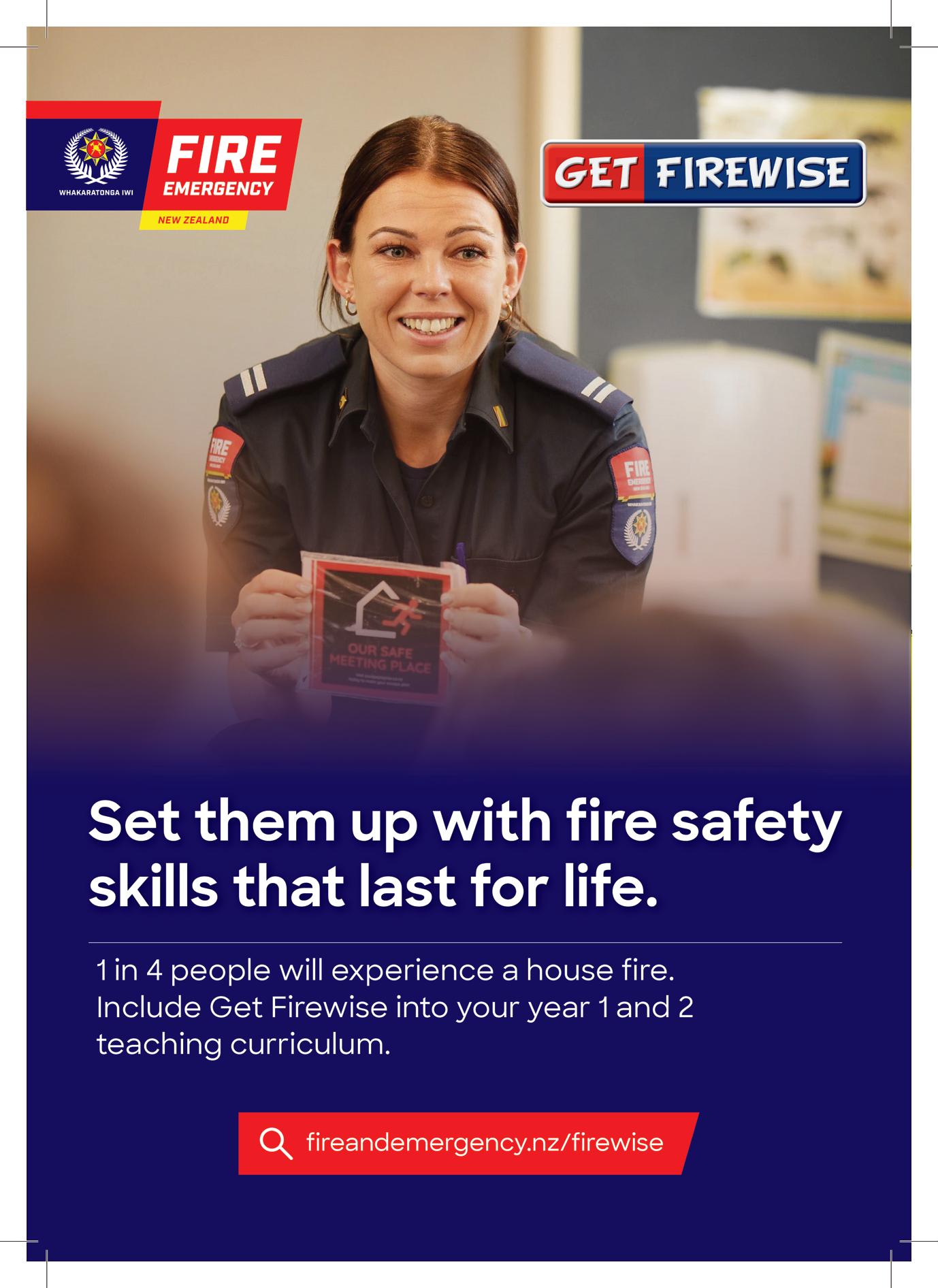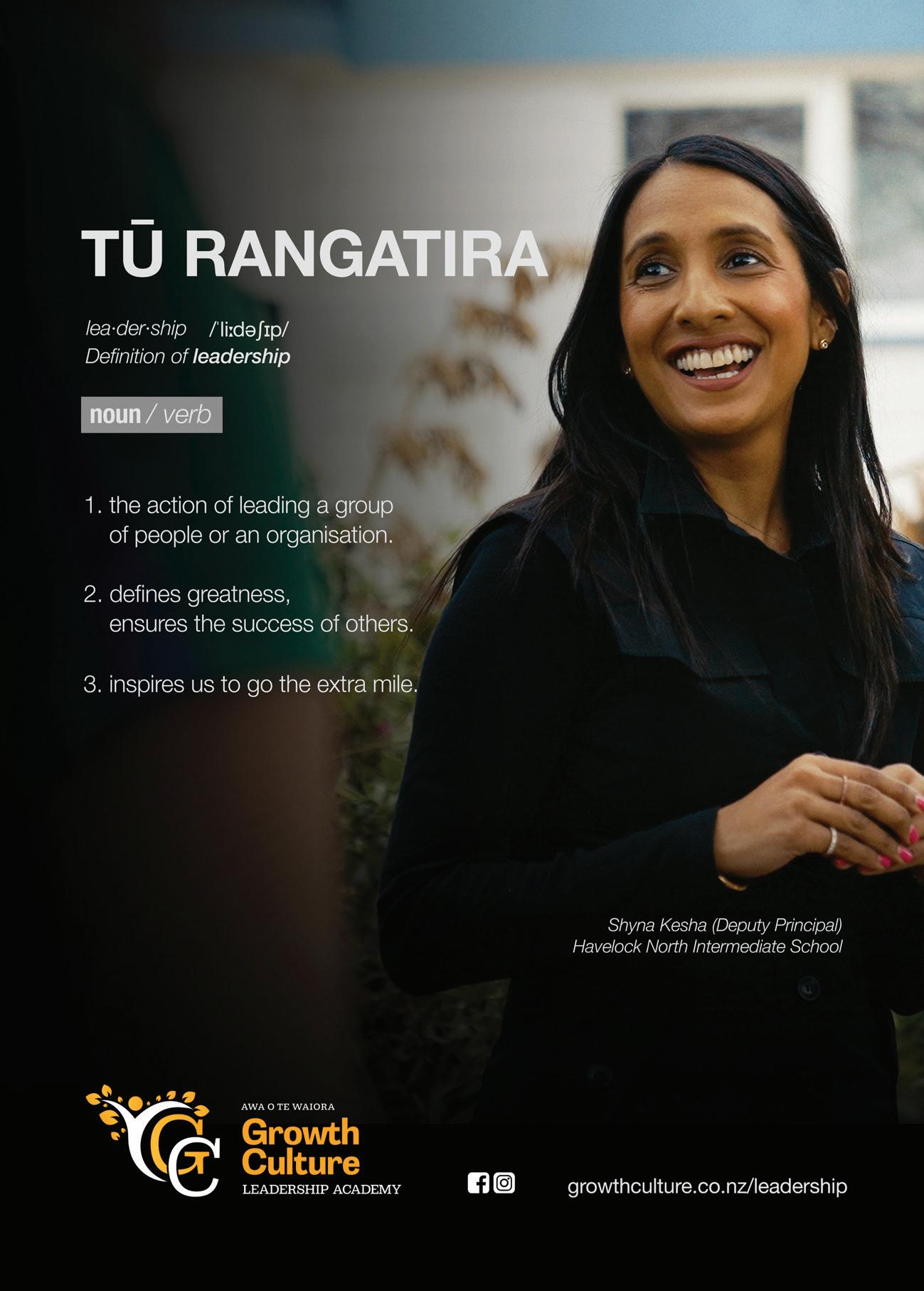Communities of learning
Early learning kaiako bring deeper connections to kāhui ako
Inclusive arts support ākonga to communicate lived experience
Culturally sustaining education through Tapasā framework


Early learning kaiako bring deeper connections to kāhui ako
Inclusive arts support ākonga to communicate lived experience
Culturally sustaining education through Tapasā framework


Pause Breathe Smile is a mind health programme that helps tamariki to regulate their emotions, build self-awareness and relate positively to others.
Southern Cross funds teacher training for any primary or intermediate school in Aotearoa. With this support, Pause Breathe Smile has reached more than 88,000 children in over 320 schools since September 2020.
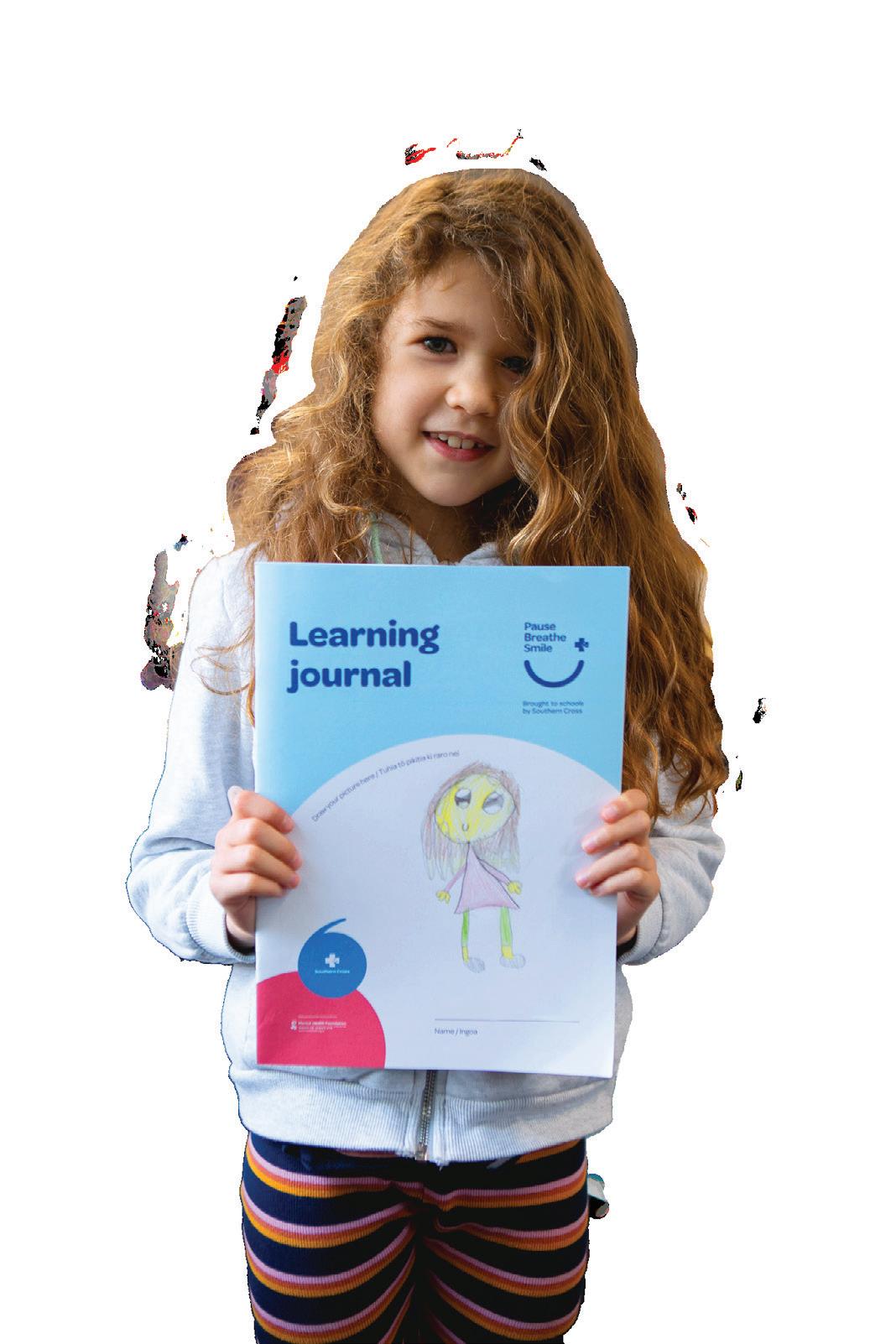
learning kaiako bring deeper
kāhui ako
ākonga take their passion for
taiao to local leadership
arts support ākonga to
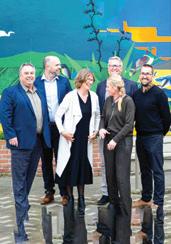
their lived experiences
voice collection empowers Motueka Kāhui Ako


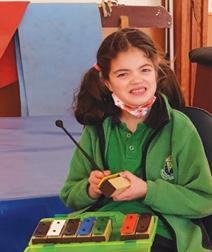
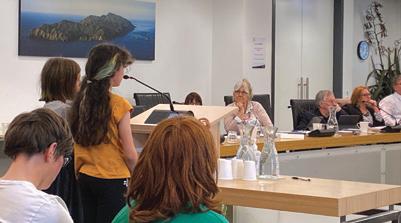

mātauranga Māori as a kāhui ako
the cover
Vries,
Prestidge,
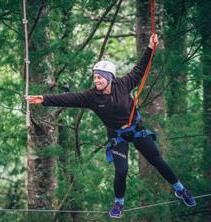
Turner,
Watson
Motueka’s

Ōtūmoetai Kāhui Ako takes a coordinated and collaborative approach to learning support, working with agencies and iwi to support the learner and their whānau.

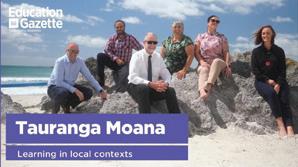
Kaitiaki talk about how schools and iwi created a localised curriculum resource.
To view the
Schools in Whakatāne are working together to strengthen relationships with parents and whānau in an effort to improve attendance and engagement.
Scan the
PUBLISHED BY
Education Gazette is published for the Ministry of Education by NZME. Educational Media Ltd. PO Box 200, Wellington. ISSN 2815-8415 (Print) ISSN 2815-8423 (Online)
All advertising is subject to advertisers agreeing to NZME. Educational Media’s terms and conditions www.advertising.nzme.co.nz/ terms-conditions-credit-criteria
STORY IDEAS
We
SUBSCRIPTIONS
VIEW US ONLINE
KEY CONTACTS
Reporter
Display
Vacancies
paid
The deadline for display advertising to be printed in the 7 November 2022 edition of Education Gazette is 4pm on Friday 21 October 2022.
This publication is produced using FSC® Certified paper from Responsible Sources.
he whakataukī above is the perfect embodiment of this first issue of term 4. He rau ringa e oti ai, many hands make light work. Many hands in this case, are those that come together as kāhui ako and communities of learning to better support learning pathways from early learning through to secondary school.
In this issue, explore how Tauranga Peninsula Kāhui Ako early learning services are informing best practice transitions and improving professional development for all kaiako, how Motueka Kāhui Ako is embracing a relationship-based learning programme which features collecting authentic student and whānau voice, or how Mid Bays Kāhui Ako is starting to weave mātauranga Māori authentically through their local curriculum. We also take an in-depth look at how educators are supporting
with disabilities and additional learning needs to confidently express themselves, celebrate their identities, and strengthen their sense of belonging through the creative arts.
I hope this issue provides inspiration for your own teaching practice as you enter the final chapter of education in 2022. If not, I implore you to share your ideas and your feedback with us so we can deliver a magazine that hits the mark. There are just three issues left in the year, and I know there is plenty of fantastic teaching practice and community engagement to share.

I hope you are safe, happy, and well.
Noho ora mai rā, nā
Sarah Wilson, chief editor
We know for rangatahi, life’s really fast paced. So let’s work together to help them slow down and teach them skills to look after their mental health and wellbeing. Headstrong is a free app, developed by the University of Auckland, dedicated to helping young people in Aotearoa. It’s like a personal trainer for your mind. headstrong.org.nz
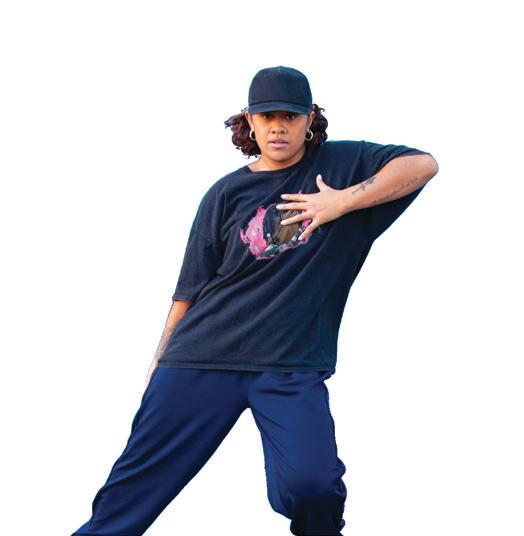


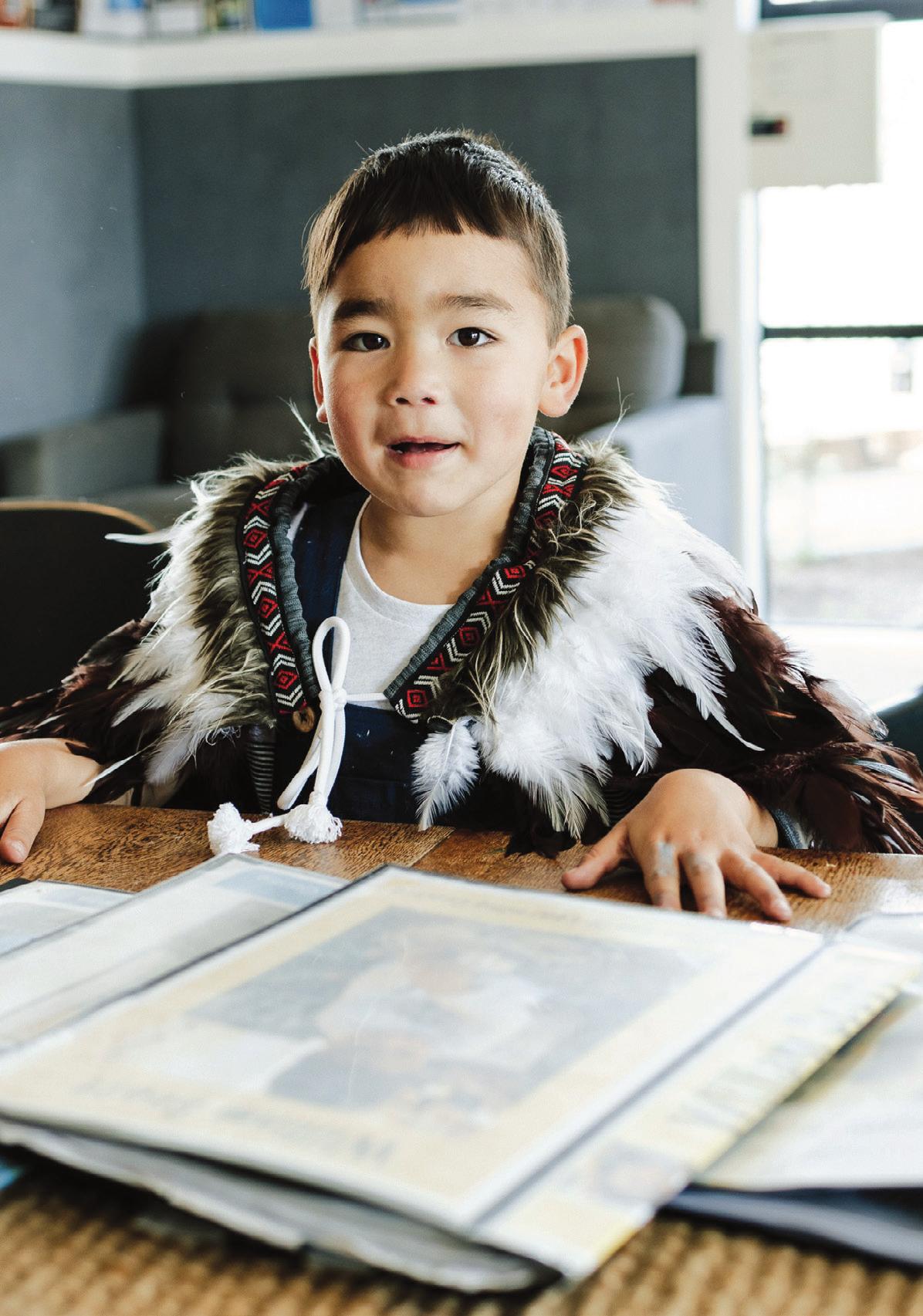 The contribution of early learning kaiako to Tauranga Peninsula Kāhui Ako is supporting better transitions for tamariki.
The contribution of early learning kaiako to Tauranga Peninsula Kāhui Ako is supporting better transitions for tamariki.
Leaders of the Tauranga Peninsula Kāhui Ako have pulled out the stops to support their early learning centres; mahi that is informing best practice transitions and improved professional development for all kaiako.
Theoretically, a kāhui ako benefits all members. The reality, however, is that it can be difficult for early learning centres to engage because of resource constraints (no funding for relievers so kaiako can attend meetings, for example) and a mismatch of aspirations.
Ken Ward, lead principal for the Tauranga Peninsula Kāhui Ako (TPKA), explains.
“When kāhui ako were first established, there was an early learning representative at the table but there was nothing happening in that space. The achievement challenges at the time were limited to reading, writing and mathematics.
“Then there was a shift to culturally responsive and relational pedagogy. Early learning services got some funding to do professional learning as well so suddenly, we were starting to see some connection because they were doing some things that schools were doing.
“We asked ourselves what we could do to enhance early learning participation, little things like making sure they were invited to everything because a lot of the time they were not being invited. And there was an assumption that because it’s hard to get release teachers in early learning, they wouldn’t turn up.”
Encouraged by a high turnout of early learning kaiako to a teacher-only day, Ken got permission to appoint an across schools lead from the early learning sector. Melissa Osmond, an early learning educator of 22 years, joined the TPKA late in 2019.
Melissa has a passion for supporting and empowering other kaiako and has been involved with Educational Leadership Project Ltd for 21 years. She has also participated as a teacher/researcher for the Ministry of Education’s Centre of Innovation research projects and shared her experiences in teaching and learning throughout Aotearoa. She is also well-embedded in the Tauranga Peninsula community; she has three children at
schools in the kāhui ako and teaches three days a week at Greerton Early Learning Centre.
Melissa’s task, to lead development of the early learning workstream, is a big job and one that she squeezes into the two days that she’s not teaching. But with autonomy, agency, and the budget to create her role, and the unswerving support of TPKA leaders, Melissa’s work is paying dividends.
“The two days a week that Melissa does is out in the community. She is visiting all the centres, she’s running all the meetings and leading in that space, then connecting with the new entrant teachers at the primary schools,” says Ken.
In the year since she took the role, seven early learning services have joined the kāhui ako, encouraged by Melissa’s advocacy and the opportunity to contribute and learn. Melissa says the kaiako have rich knowledge to share and can also benefit greatly from the PLD available in a community of learning.
“There are amazing kaiako in our community and they’ve got such strong teaching practice, we really need to showcase that. We also want to make sure that we are giving back, so that’s the provision of PLD that helps to strengthen their pedagogy further.”
“We have about four events each term. One is our collaboration between schools and early learning in terms of building a shared kaupapa around transition to school,” explains Melissa.
She says they have set it up as a professional growth cycle inquiry review, with everyone collaborating to make systemic change.
“What’s happened a lot in the past is that everyone comes together, they talk and talk, but we don’t make changes that better our community. So, we are working on wise practice statements to be given to governance and adapted as objectives.
“We are trying to grow a clear expectation around what works in terms of transitions that support whānau and mokopuna.”
Melissa says transition visits are important, and children have a smoother transition if their teacher from kura visits them in their early learning centre.

“Tamariki have amazing strengths and capabilities and for a teacher from school to visit them in the centre, to build that connection in a place of safety is huge, but it’s not funded. Teachers don’t get the release time from school to come and make that happen. So how do we shift some of those practices so that we can support these
amazing children and their whānau? These are some of the questions that we are trying to unpack.”
Another focus for the kāhui ako will be to unpack the curricula, particularly Te Whāriki
“It’s such a rich and beautiful curriculum, and it’s all based around relationships and mana. If we understand each other better and know each other’s curricula and how they weave together, we can create a continual learning curriculum that complements both sectors.”
As an example, Melissa says kaiako from early learning and primary had a robust discussion about how wellbeing and self-management are connected.
“We asked ourselves what we could do to enhance early learning participation, little things like making sure they were invited to everything because a lot of the time they were not being invited. And there was an assumption that because it’s hard to get release teachers in early learning, they wouldn’t turn up.”
Ken Ward
“If you are working within your rear brain and you don’t feel safe and connected to the people around you, how can you move to a position where you’re able to advocate for yourself and have authenticity and autonomy in the classroom, and manage yourself? It begins with wellbeing.”
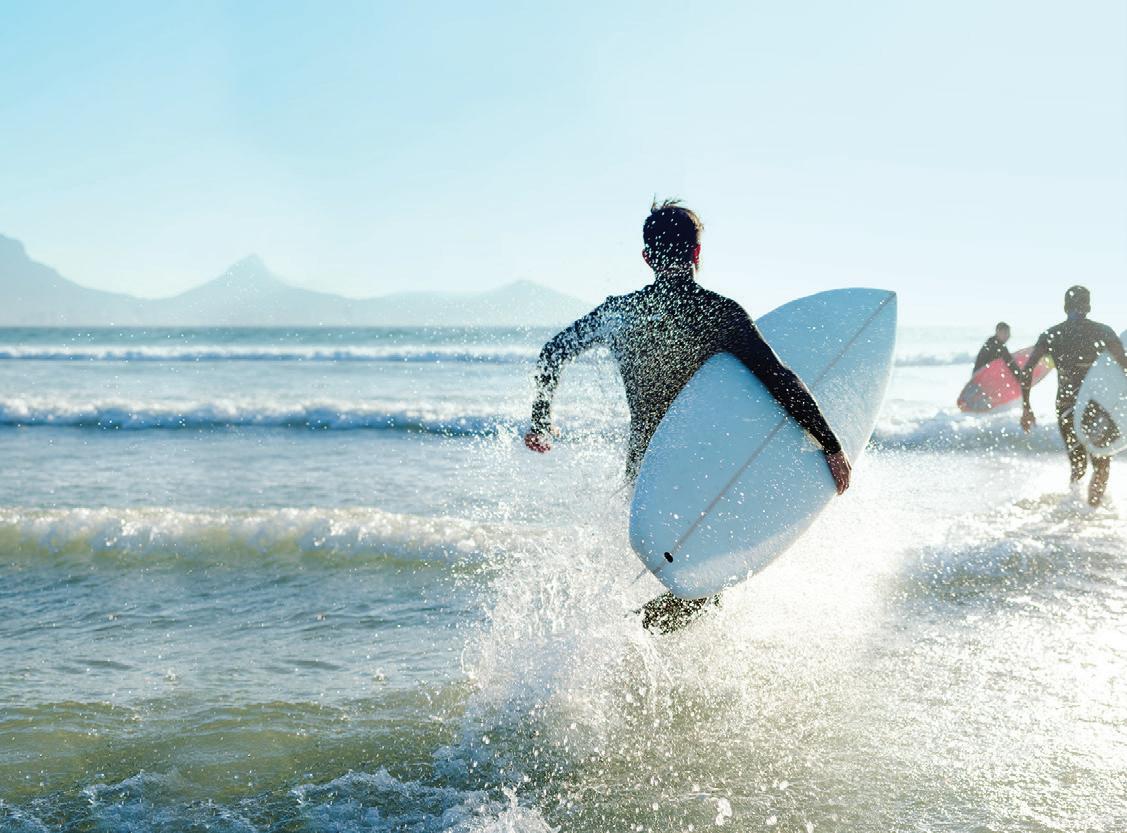
Dismantling the ‘us and them’ mentality Ken’s professional background eases Melissa’s task. He trained in early learning and worked as a kindergarten teacher before moving to primary teaching and leadership.

“I used to feel the mentality of ‘us and them’. It’s like, ‘We get these children to school and then we start teaching them.’ It’s frustrating,” says Ken.
“Where I’ve seen a good connection is primary schools doing play-based learning. They can learn a lot from their early learning colleagues, particularly about learning stories and being able to assess the play. I’ve seen a lot more respect for early learning teachers when we are talking at our meetings and sessions around not just transition but talking about best practice around playbased learning and sharing those ideas.”
Melissa is enthusiastic about the collective’s approach to play, saying many schools are working with the foundations for learning.
“Which is awesome because they’re thinking about the wellbeing of children and making sure they’ve got foundation skills to build upon before they start formally learning to read and write. Parents are feeling so relieved about their children starting school because there isn’t the pressure to start reading the day you start.”

Ken says some of the transition work is around primary teachers acknowledging the prior learning of new entrants and valuing the information that comes in their early learning portfolios.
“It’s about spending time with families because for some of them, it’s their first child into school.”
Melissa recalls an example of how early learning and primary kaiako differ in their approach.
“Last week a centre facilitator said that they were in a PLD session and one of the teachers mentioned tamariki starting school, and ‘starting to learn’. This early learning teacher was so shocked that she couldn’t respond. She didn’t feel confident to speak up and say that tamariki don’t start school with empty slates.
“The moment they walk into kura, they bring what was gifted by their tīpuna. They have spent time in the womb, and five or six years on the earth learning every single moment of their days and they bring a rich story with them. Don’t unpick what we have helped to create, it’s about continuing to weave and being a new thread in their tapestry.”
Melissa says it’s a deeper, bigger picture she hopes early learning kaiako are bringing to the kāhui ako.
“It’s about changing the view that early learning kaiako are not as professional or knowledgeable as kura teachers, and about building the confidence of early learning teachers to speak up.
“I feel we are growing that partnership. We are hearing each other and every group that has fed back to the collective has said it’s going to be a better partnership if we keep this narrative going and we continue to work together.”
“It’s about changing the view that early learning kaiako are not as professional or knowledgeable as kura teachers, and building the confidence of early learning teachers to speak up. I feel we are growing that partnership.”Schools can learn a lot from their early learning colleagues, including being able to assess play-based learning.

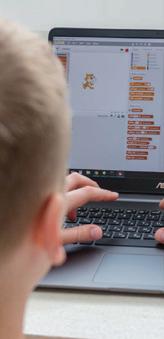


Students at a small school on the Kāpiti Coast are so passionate about climate action, they took their concerns to their district council to champion change – supported by kaiako who are creating powerful agentic learning experiences.
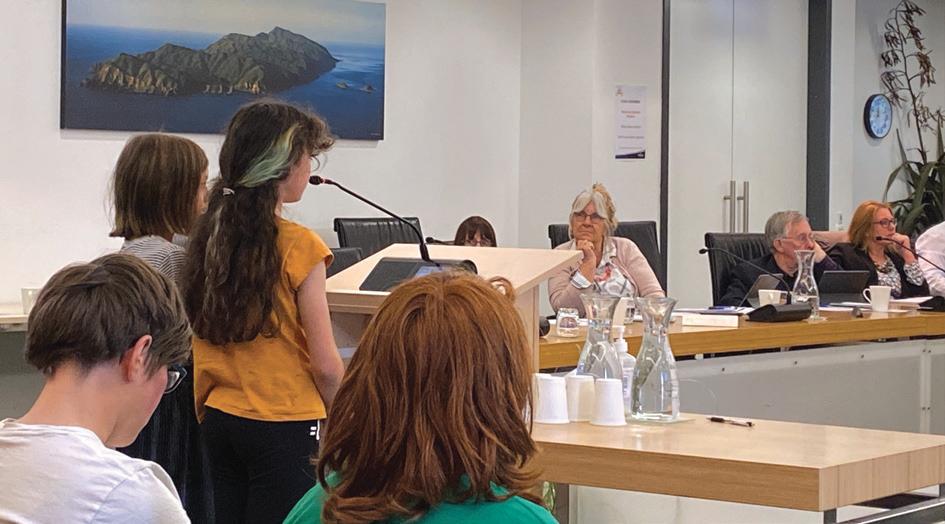
Paekākāriki School in the Kāpiti Coast prides itself on being the ‘home of the barefoot learner, kainga o ngā ākonga māhorahora’. It is this connection to Papatūānuku and te taiao that drives their engagement with climate change education and empowers student agency – which transcends the school grounds, all the way to the district leadership table.
Education Gazette visits the small village school to kōrero with deputy principal Rachel McMullen and Year 7 student Aneke, who is this year’s Fred Hollows NZ Junior Ambassador for her impassioned speech to the local council about the region’s environmental footprint.
Rachel nominated Aneke for the Fred Hollows NZ award, saying she isn’t afraid to speak out or stand up for
what is right.
“Aneke is passionate about encouraging and supporting sustainable practices. This involves connecting with others in our community to learn about local environmental issues and actions that students can take to address these.”
Even while interviewing Aneke, Rachel’s eyes are alight with pride.
“She’s really articulate. She just totally nailed it. It was really good watching the grown-ups’ faces where they sort of just went, ‘ooh’. At her age, I don’t know that I would have had the gumption to do that.”
Aneke’s success is well in line with the school’s focus on environmental responsibility and climate change education.
Paekākāriki strives to give ākonga experiences that will give them the skills and knowledge to step out and make a positive difference in this world, with education practices that emphasise creating independent learners.
Rachel explains it was about five years ago that the school joined up with EMR (Experiencing Marine Reserves) to investigate environmental action. After snorkelling in the reserves, students then created action projects, and that became embedded in school culture.
Once a week, the school has a schoolwide day-long programme – underpinned by te ao Māori concepts of rongoā, maramataka, Te Whare Tapa Whā and Te Whāriki Ākonga rotate through māra kai (spending time in the edible garden), kauta kai and kindness (cooking and sharing of kai for manaakitanga), rongoā and raranga (learning holistically about the native plants, their uses and the tikanga surrounding them).
“We have passion projects, and often the students will turn to something environmental, because it’s part of their learning every day. They know their villages/local areas really well, and they are passionate about making sure it’s kept nice and clean and safe.”
Rachel says many of their initiatives and programmes are often student instigated.
“They feel pretty confident to come to us with ideas and we’ll go through the ‘well what could we do about that?’ They will have an idea and then we’ll support them in some way or get a local expert in. They’re pretty amazing children.”
Rachel says one of the big drivers for agentic learning at Paekākāriki is who their students will be, and the difference they might make in the world when they go on to secondary school and beyond.

“We find that if students are enabled to be agentic learners, to have choice and voice, to approach the adults with something they are passionate about, then their learning is deeper. It’s an authentic way of learning, and a reason for learning something, as opposed to being told topdown, ‘we think this is important’.”
Rachel explains that agentic learning or student agency is really about ākonga identifying a cause they are interested in or passionate about, finding a way to problem-solve that, and having someone (kaiako or local experts) to support them.
“So often I see people give it a go, but they don’t awhi the students well enough, and it kind of falls over. But there’s learning in that, and it’s important to let children try and figure it out at the same time.”
Rachel says it’s all about providing the opportunities and scaffolding students through.
“Aneke was really capable of rising to the challenge, and there will be other students that need a little bit more support which is absolutely fine. But everyone has the foundation of agency here. By providing tiered levels of support, students are able to be agentic in their own ways. Whether it’s being one of our recognised leaders, or being a leader from behind, or beside, or supporting their friends who are leaders. It all stems from opportunity.
“It’s about thinking, ‘What sort of adults do we want our children to be? What sorts of jobs do we want them to have at the end of it? How do we want them to manage themselves independently?’ All those types of things go into our decision making, supported largely by our local curriculum that had buy-in from the whole community.”
Rachel McMullen (pictured above)
Year
“It’s about thinking, ‘What sort of adults do we want our children to be? What sorts of jobs do we want them to have at the end of it? How do we want them to manage themselves independently?’ All those types of things go into our decision making, supported largely by our local curriculum that had buy-in from the whole community.
“That’s where we see the real magic. When you see what students do under their own steam, they identify the problems, and then they ask for help. It’s amazing.”
An example of this is seen with former students like Sophie Handford, who is the local ward councillor for Paekākāriki and ex-student of both Paekākāriki School and Kāpiti College.

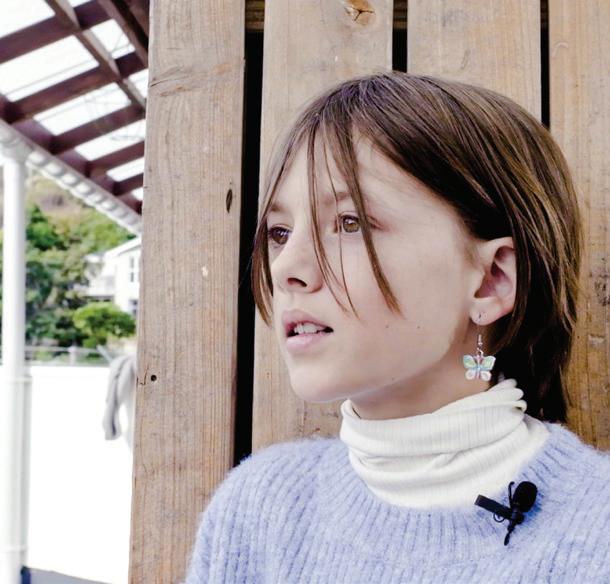
Rachel says Sophie was in leadership positions throughout her schooling, and now she is in council, she has come back to the school to support and empower this next generation as local citizens.
Last year, Sophie helped students like Aneke to make submissions to the Kāpiti District Council’s Long Term Plan process.
“The students heard that there was going to be an opportunity for adults, largely, to go to council and present their thoughts. And they were the ones that said, ‘Well why can’t we go? We have ideas. Can we go?’” explains Rachel.
Kaiako Jess Hortop organised for whoever was interested to gather their ideas, group themselves into key themes and go to council to speak. Rachel adds that ākonga had absolutely no adult input, and that kaiako were there as support.
“They decided that they wanted to end their session with a waiata, which was amazing. It’s part of our kaupapa, it’s something that we do. That’s part of what it means to be a Paekākāriki barefoot learner, is that we have strong roots in te ao Māori as well.”
Ākonga went on to raise concerns about insufficient public transport, the need for a larger, stricter marine reserve and wanting to see action to back up the climate emergency declaration.
When the opportunity to talk to the council about environmental issues arose, Aneke says her hand shot right up.
“I love talking about climate change and how we can solve stuff like that. After deciding what I would speak about, jotting down some notes, it was just a matter of going and actually speaking.”
Aneke spoke about the longer-term impact of global warming on her generation, particularly the impact of plastic packaging and single-use plastics, challenging the mayor to approach companies to stop plastic packaging rather than organising more bins.
“If I’m walking to the dairy, say with my friends, so much rubbish is just in the gutter. I do try and pick up as much as possible, but my hands get full. Nobody puts stuff in all these bins that are being put out. I just find it annoying. In my opinion, putting out more bins just encourages more rubbish.”
“It doesn’t matter if you’re shy. If you have something to say, say it. It’s not just going to get out there unless you speak up. The problem is not going to solve itself. We need people to take action.”
When asked how she felt before her speech, Aneke says she did feel really nervous.
“I managed to get a friend to come and stand with me. It is pretty nerve-wracking speaking out against the mayor when he’s right there in front of you. In preparation, I did write a short script. But I didn’t practise really.”
While much of her passion for the environment has grown at school, Aneke says she also learned a lot on social media, including on YouTube. She is also very quick to respond when asked who her role model is.
“Greta Thunberg. Absolutely Greta Thunberg. She is just such a role model, the way she is so confident to speak out on all these issues. I aspire to be like Greta.”
Aneke herself is also a source of inspiration for her own friends and family, who she says are getting better at picking up rubbish.
“After speaking with council and being awarded the Fred Hollows award, I feel like many of my friends and family were inspired to take steps towards climate action and helping protect the planet,” she says.
Aneke’s passion for the environment continues, with a newfound interest in the ocean and marine life.
“I just find it so sad and devastating that all these sea creatures are dying from eating plastic. [The ocean] is definitely a big thing for me. A couple of months ago there were lots of big gusts of wind, and you could see the rubbish going into the ocean. It was going too fast and high for me to grab it. It’s devastating when things like that happen, and I can’t do anything about it.”
There are things that can be done, though, says Aneke. Her advice to other young people is to speak up.
“It doesn’t matter if you’re shy. If you have something to say, say it. It’s not just going to get out there unless you speak up. The problem is not going to solve itself. We need people to take action.”
Continuing the kōrero on inspiration, Rachel says she is always so inspired by her students.
“That’s why I love my job. I learn alongside them. I think we all remember being that age, and I think most of us can confidently say we would not have been able to do what they did. But that’s part of our kaupapa. That’s why we provide opportunities for learning, and have that trust and relationship between students, the adults, the community, and whānau.

“I just bring it back to, ‘What kind of adults do we want at the end of the day?’”
We ask Rachel what her advice would be to other educators on how to leverage student agency, based on her experience.
“Try things and don’t be afraid to fail, or to notice that maybe it didn’t work for some students.
“The thing about student agency is, it takes time to develop. You can’t just throw an option at a child and expect them to know what to do with it. It’s too much of a deep end, including for you as an adult to help support them.
“Provide small options for students to have choice and voice and build it from there. And don’t be afraid to ask other adults for help. The more adults on the ground and the more adults you have to support the children, the deeper you can go.”
Paekākāriki School students are passionate about environmental action.
Educators are realising the value of regular involvement and accessibility in the creative arts for ākonga with disabilities and additional learning needs. Mt Richmond School, Lincoln Heights School and Ko Taku Reo Deaf Education New Zealand have all used Creatives in Schools funding to support ākonga to confidently express themselves, celebrate their identities, and strengthen their sense of belonging.
Mt Richmond School caters for ākonga aged five to 21 who are supported through Ongoing Resourcing Scheme (ORS) funding. They have a main base in Ōtāhuhu, with satellite classes at six local schools. Some of the students have high and complex needs.
The school is inspired by the Reggio Emilia philosophy, and deputy principal Therese Arahill explains the principles behind this.
“The child is the protagonist. The child is a communicator. The child is the collaborator. The teachers are the nurturers, guides, and researchers. The environment is the third teacher. So those are the principles that we use as a framework for teaching and learning here.”
Mt Richmond has different tools and access to support from speech-language therapists who help support communication, but the ability to engage in the creative arts engages students in a different level of communication and self-expression.
“It allows them to tell their stories. Our students, many of whom have extraordinary background stories as to how their lives are impacted on by their abilities, need to have their story told. It needs to be told to our community and to everyone because it helps develop a sense of empathy in the community.”
The school decided to explore visual arts as they had a connection with Māpura Studios, a creative space in Tāmaki Makaurau Auckland offering inclusive, multimodal art classes and art therapy programmes for people of all ages.
Therese says the creative who led the project, Sam Knegt, is “fantastic” and has been able to create experiences that best fit the students’ abilities and
interests, without influencing what they do.
“It relies on the expertise of the teacher to be able to give those experiences without influencing, and that is a challenge with our students. Some can tell you how they want to do it, and yet they can’t physically do it for themselves.
“We need to be able to listen carefully, adapt ideas and adopt new ideas to allow these students to create their own expression, rather than what the teacher might think they want to do.”
Finding what suits ākonga
Sam says her approach at Mt Richmond has been guided by her experience with Māpura Studios.
“Every person that comes in has a different style of art making or communicating, and they may each want different things out of being in the open studio. So, it’s about getting to know each individual and figuring out what they might want out of the session.”
Sam strongly emphasises the need for good communication with the school and students, particularly in the early stages.
“There might be someone that really likes the feeling of paint on their hands. After the first couple of sessions I will have noticed ‘ahh well look at this person. She really loves just squeezing the paint and seeing it drip off her fingers.’
“So, when it comes to the following weeks, I’m going to make sure that she’s got a piece of paper underneath her and paint beside her so that when she’s squeezing, she’s making marks as well. I’m not going to tell her, ‘No, wash your hands. Get a paint brush.’ That’s not what she wants. She doesn’t want a paintbrush. She wants to touch the paint and see it slop around.”
Finding the right method for creativity can be trial and error, but Sam says putting the effort in to try different approaches pays off. Methods like having a paint-covered ball kicked around on paper, using different objects to make marks (including objects from the outdoors such as leaves and twigs), and paper sculptures. She says the only limitations are the materials that are available rather than a lack of imagination.
“Just do whatever feels right for you in this moment. Just make some marks. It doesn’t have to be a face, but it could be. It doesn’t have to be anything in particular. Just experiment with the materials and get a feel for them.”
Both Sam and Therese are keen to organise an exhibition of the artwork in a community space such as the local library. Currently Sam is working with staff member Saskia Nickless to achieve this.
Lincoln Heights School in Auckland has a roll of 450 students and its own learning support space, Kahukura, that currently host 22 students.
Principal Leisha Byrnes says being truly inclusive of diversity makes them a better school.
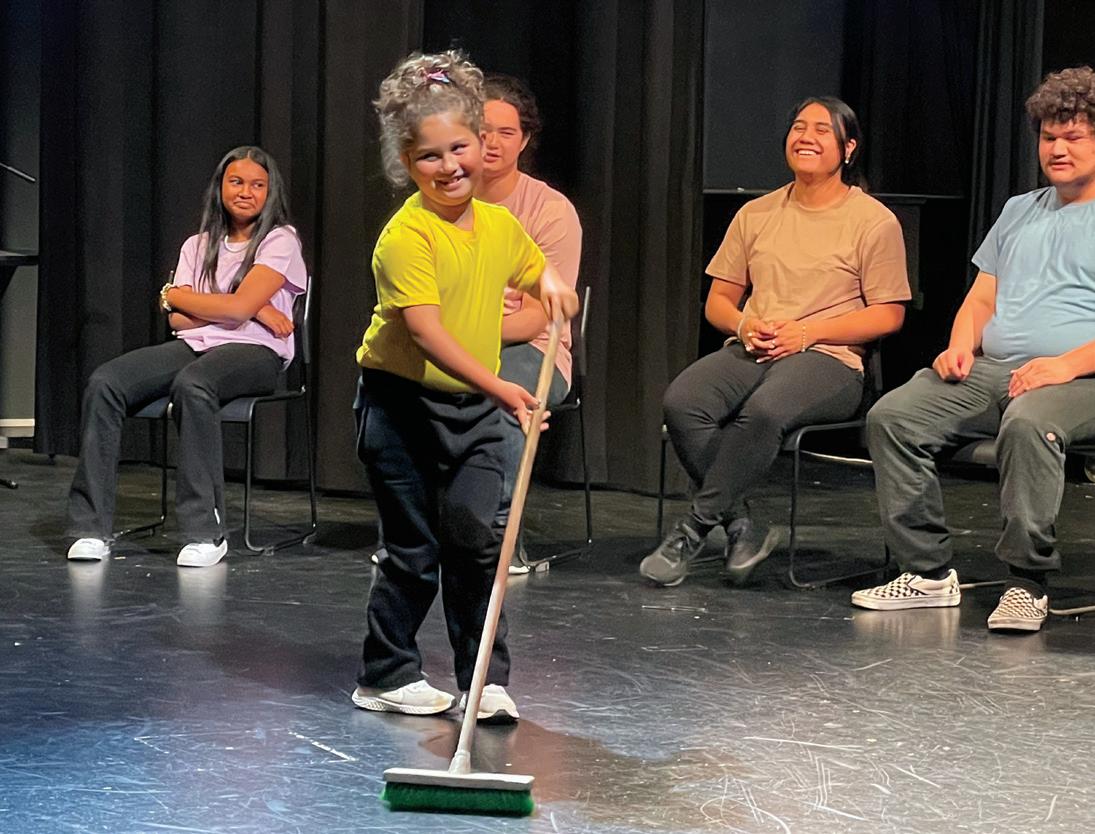
“It makes us very welcoming to whoever comes along and whoever wants to be part of our school.”
Lincoln Heights has had a relationship with Raukatauri Music Therapy Centre for the past four years. In obtaining Creatives in Schools funding, they were able to extend their programme and relationship with music therapist Angela Jeong, who now visits the school for a full day, consistently each week. They also purchased new instruments for ākonga to use.
Deputy principal and learning support coordinator
“Our students, many of whom have extraordinary background stories as to how their lives are impacted on by their abilities, need to have their story told.”
Therese ArahillKo Taku Reo student using movement and lighting to tell the stories rather than music and dialogue.
Kiri Steed says they wanted to ensure the sustainability of Angela’s progress with ākonga.
“We have children with physical needs as well as children with communication needs. Angela targeted the instruments we purchased so that everyone could be involved in the process and the therapies.”
Kiri says matching the instruments to the abilities of each student has allowed those with physical difficulties to be fully engaged in group work.
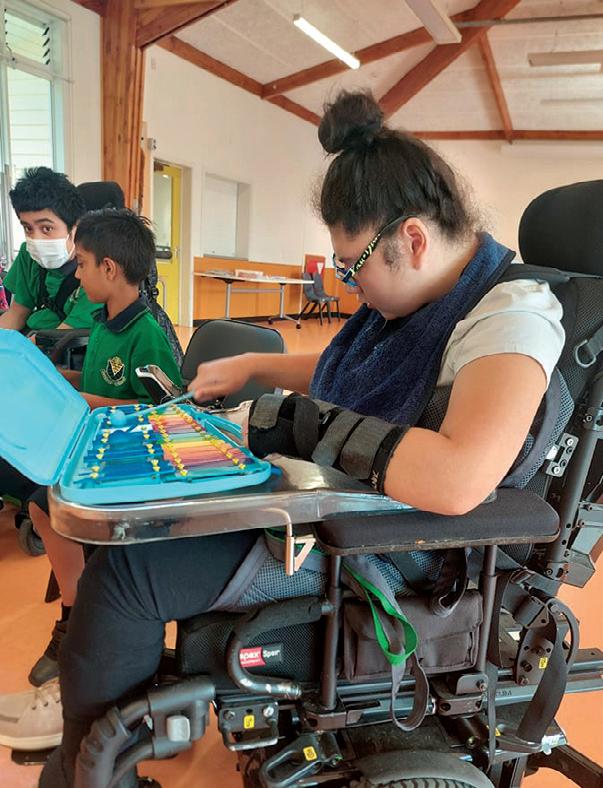
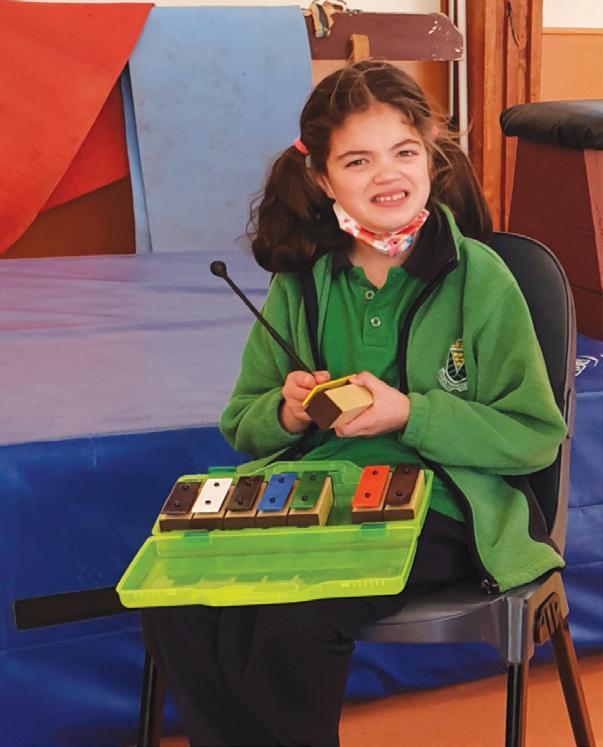
She feels the beautiful thing about music is that no matter what the communication, physical or social needs of the students are, every one of them is successful when participating in the programme.
“You notice the growth in their confidence and their participation over time. So, they might start with just being in the space and not participating. As each week carries on, they feel safer to be an active participant in the therapy and make some music.”
Something that is helping students gain confidence is the ability to communicate through music, particularly for those who are non-verbal.
“Their words aren’t there as such, or intentional communications are not there, but in this moment when you see them making music and engaging with their face and body language, their smiles, their laughs, and reactions to sounds… You don’t need words because you can understand how they’re feeling,” says Kiri.
A path to self-expression
Angela is keenly aware of how music can help people communicate and express emotions. At the age of 14, she encountered a seminar on music therapy and a short while after this her grandfather had a stroke. He was encouraged to do music therapy and she could see how it helped him to regain speech through music and to be expressive, which cemented the idea that music therapy was her path.
She holds a Masters degree in music therapy and has studied widely, including doing certificate programmes in DIR Floortime for music therapy, which is specific for music therapists but contains an element of play.
“It has the same the philosophy of the Floortime model. So basically, the same approach but looks at how to play with a child with disabilities using music instead of toys to meet their individual goals.”
Angela works with a variety of people in different locations such as care facilities, schools and in home care. One of her clients is autistic and has taught her what living with autism is like, based on her lived experience of it and how music could help.
“An autistic person’s sensory integration and sensory feedback are different, so they have a lot of trouble regulating all the senses, all the sensory information that they get. Hence why they may flap their hands, or they chew on things or stamp against something hard.”
Angela incorporates movement activities at the start of a session at Lincoln Heights, saying, “For some students to be able to engage, their body needs to be regulated first. This can involve breathing activities to be calm, or lots of dancing and movement activities.”
As well as helping some students to self-regulate, Angela says dance activities can improve balance and motor skills by creating body awareness.

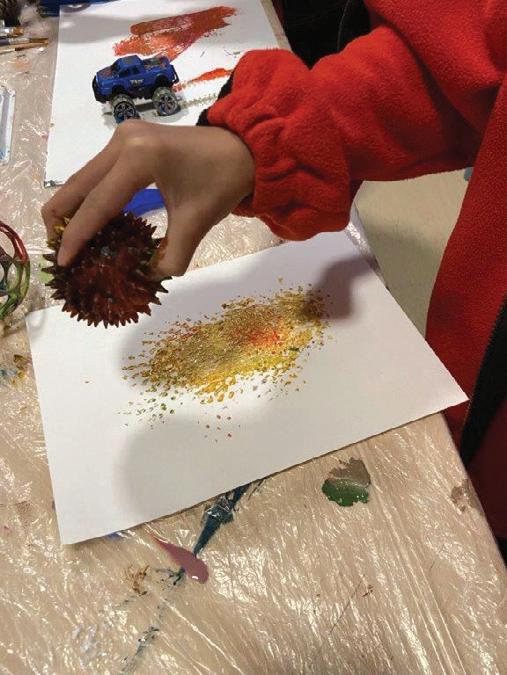


Angela also leads cognitive activities such as asking students to tell her a word that starts with a particular letter. She then incorporates those words into a song for them.
“They don’t perceive it as a task, they perceive it as play and music. It’s a great tool to keep students activated and motivated to engage.”
Other activities can include getting students to start and stop the music, as well as play softly or loudly on cue to help with impulse control. Doing group work also allows the students to gain social skills and an awareness of others.
“The behaviours occur quite naturally because I designed the activity in that way –it can only keep going if they apply the social behaviours.”
Angela will work with some students on a one-to-one basis to assist them with interactive skills.
“I create a sense of interplay by initiating musical ideas they can respond to. I also respond to their music to create a sense of dialogue and reciprocity for them to apply the same concept to interacting with others.”
Her methods can also support students who have experienced trauma and may struggle to communicate their emotions.
“When I improvise, I play music based on the sounds students expressed, so they do not have to talk about it.
“I play what I think I heard, what they are trying to say through their music. I support their music and I accompany their music. I create a space for them to know, ‘Oh, I’m being heard, and I’m being embraced’.”
Ko Taku Reo Deaf Education New Zealand provides a range of education services for Deaf and hard of hearing learners, from early learning through to transition to the workforce. This includes tailored support for over 2,500 students in mainstream schools through integrated Outreach Services to support their educational success. The cornerstone of community is provided through an ‘Enrolled School’ of approximately 120 students who attend Deaf Bilingual (NZSL/English) Provisions at partner schools in Auckland, Wellington and Christchurch. Director of Teaching and Learning, Louise Roe, explains that these bilingual provisions enable ākonga to be able to learn, progress and achieve as Deaf and hard of hearing.
A group of 18 Auckland-based ākonga from Ko Taku Reo took part in a Creatives in Schools project using their existing connection with the Tim Bray Theatre Company. The company’s youth theatre outreach manager Madeleine Lynch explains that the professional company usually puts on productions four times a year, based on New Zealand children’s books. The company has a ‘Gift a Seat’ programme that enables schools to see the performances for free.
The school became familiar with the company by attending one of the special shows each year which provides them with an interpreter, says Kaori Kobayashi, Assistant Head of Enrolled School.
“You notice the growth in their confidence and their participation over time. So, they might start with just being in the space and not participate. As each week carries on, they feel safer to be an active participant in the therapy and make music.”
“In the past, we’ve always been just audience members. With this Creatives in Schools funding, we’ve been able to be performers on the stage, which is something that’s very new for us.”
The theatre company had two youth theatre directors working with ākonga and were impressed with the skills they displayed.
“One of the first things they found was that the physicality of these students was amazing. They really knew how to move their bodies because Deaf culture is a very physical culture,” says Madeleine.
“It was amazingly easy compared to some mainstream students at the same age. Easy to get them to physicalize and use their bodies because that’s what they do.”
There were some challenges that the directors needed to adjust to, one these was finding the best place to stand to allow the students to view them as well as the interpreter who was in the room. However, Madeleine says that any adjustments were relatively easy to accomplish.
Senior students led games designed to get everyone used to using their bodies to express concepts and emotions as well as encouraging improvisation. This led to ākonga being asked to tell their stories, and express things that interest them.
“Students were asked to act those out with little scenes and scenarios. Some of the young students loved the idea of a butterfly emerging from the chrysalis, which became part of the show. It was a short piece, where they were wrapped up in a blanket and emerged into these beautiful butterflies.”
Kaori says the butterfly is thought to be Deaf and is the symbol of NZSL. She also says the performance was a visual rather than audio experience because dance, sign and expression through the body is much more important.
Thora Huebner, Deaf Culture Learning and Teaching lead, adds to this, saying, “It’s the embodiment of movement that shines through, like fingers through body rather than the sound. We don’t take sound elements, we take visual elements, and we embody movement.”
While the show relied on movement and lighting to tell the stories rather than music and dialogue, some students did act as MCs for each section of the show by providing a description of what was about to be performed.
“The MCs were amazing, and it was a big deal. Louise spoke to me after the show and said, ‘It’s so great to see them get up and use their voices strongly and confidently’. It was amazing and was something that some of the teachers have never seen.”
Key points of growth for ākonga Ākonga experienced many benefits, explains Kaori, saying, “To see these students really come and grow into their own as leaders and gaining confidence by being able to just step forward and take on these opportunities is amazing.”
Kaori says they had one student who had grown up using spoken English and hadn’t mixed with other Deaf and hard of hearing students as he had been in a mainstream school.

“I think it was quite a bit of a culture shock for him coming into Deaf and hard of hearing education. One of his goals is to become aware of who he is as a Deaf person, a young Deaf person.
“He was involved in the theatre group, and he learned from several other students how to use New Zealand Sign Language. His comprehension of New Zealand Sign Language and his expressive skills have developed. He’s still on his journey but that’s just one example of how we’ve seen someone really develop into strongly culturally identifying as a young person who is Deaf.”
Tuakana teina mentoring has been a key part of the programme – where older students have helped to guide younger students.
Thora says working alongside peers and being able to stand up in front of an audience to express their stories and voices, whether that be New Zealand Sign Language or spoken English, has helped to validate them as young people.
“To be able to come together as a group of Deaf and hard of hearing students and have those common
experiences that they’ve had through life, that their hearing peers haven’t had, and being able to build and grow with one another and then share that to an audience has been an amazing experience.”
Kaori recalls one particularly special moment, saying, “We have one student who has quite complicated needs. When we got him to stand up on the stage, the parents were just overwhelmed with emotions at being able to see their child perform on a stage.”
The project has given the school a lot of encouragement to go further with their work. One of the aspects that they want to work on is producing Deaf art, not just Deaf and hard of hearing artists.
“There is a difference between Deaf and hard of hearing artists and Deaf art. Deaf and hard of hearing artists are students being able to express, being able to explore, participate, gain understanding and meaning through participating. When we talk about the Deaf arts that’s more about sharing the Deaf worldview. It’s not just any topic, it’s specifically about Deaf people and our journey being Deaf in a hearing world,” says Thora.
Tim Bray Theatre Company is Aotearoa’s longest-running professional children’s theatre company. For more information about what they do, visit timbray.org.nz
Visit the online version of this article to read about Logan Park High School celebrating diversity in the music industry.
 Māpura Studios is a creative space located in central Auckland with satellite groups in other areas. For more information about the studios, visit mapurastudios.org.nz.
Ko Taku Reo students performing an impromptu haka for kaiako on the final night.
Māpura Studios is a creative space located in central Auckland with satellite groups in other areas. For more information about the studios, visit mapurastudios.org.nz.
Ko Taku Reo students performing an impromptu haka for kaiako on the final night.
A relationship-based learning programme which features collecting authentic feedback and focusing on student and whānau voice has empowered teachers and students alike in Nelson’s Tasman district.
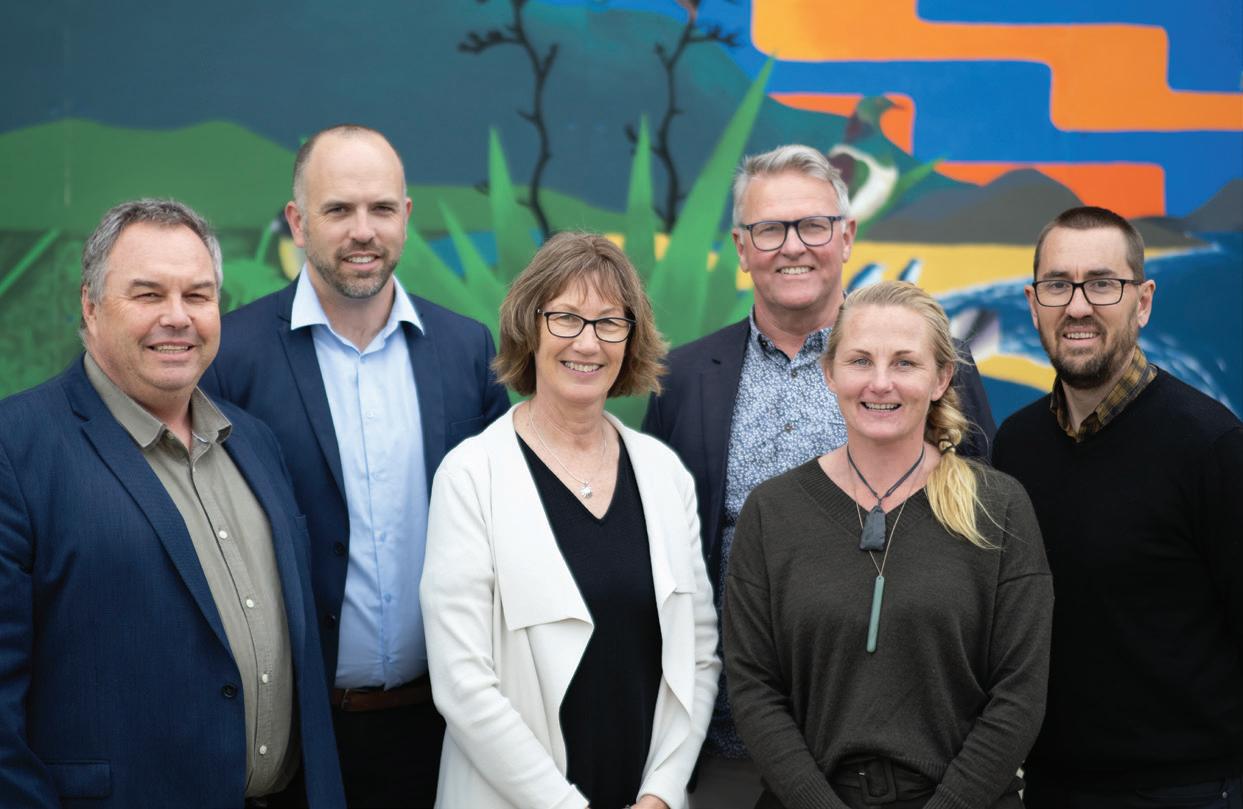
The Motueka Kāhui Ako has been following Dr Russell Bishop’s Teaching to the North-East approach, with a particular focus on disengaged students, since 2019. This approach, together with the Relationships First programme, sees teachers monitoring the impact of their relationships on student progress and modifying their practice where required.
John Prestidge, principal of Motueka High School and recent kāhui ako lead, explains that with the quality of the
teaching relationship on one axis of an imaginary graph and the quality of teaching interventions on the other, there’s a sweet spot in the northeast corner of the graph where skilled teachers with effective student relationships result in engaged, successful ākonga.
The mahi began when the kāhui ako, which was established in 2017, was looking for a project which would be flexible
and self-sustaining for each of its 13 (now 15) schools, which range from tiny rural schools to the 700-plus pupil Motueka High School.
Grant Watson, principal of Upper Moutere School, and Ali Turner, principal of Ngatimoti School, were kāhui ako leads when it was decided that the Relationships First programme combined with effective teaching strategies would be key foci.
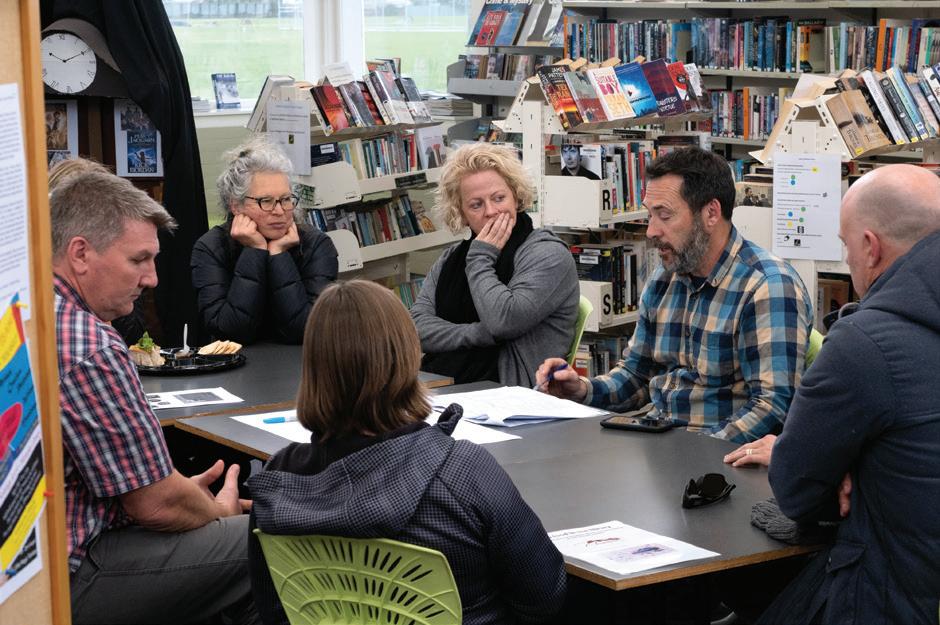
“The families we don’t see are often those we need to see. Why wait until something goes wrong? We need to build a relationship beforehand. The proven research from Dr Russell Bishop validated our thinking about what we needed to look at,” says Ali.
“We could see that it wasn’t a one size fits all model. Each school could take it from where they were at, rather than us all being a clone of each other,” adds Grant.
Data can be collected in different ways depending on the goals each school sets:
» Voice shifts (voice is collected from whānau, leaders, staff, students)
» Attendance
» Engagement
» Achievement
» Retention.
Cognition Education was commissioned to collect feedback and voice from the most disengaged students and their whānau to learn about their educational experiences.
“Schools are really data-rich places so you can look for a whole lot of flags – your attendance rates, who’s getting in trouble, who’s not achieving well – and ask, ‘Who’s giving us signs that they are disengaged from learning, or from school entirely?’” says John.
“The voice challenged our stereotypes of what disengaged looks like. We learned that the presentation of disengagement can be as individual and unique as our students themselves.”
Heidi Trott
Much of the feedback reflected the quality of relationships between student, teachers, and schools in general. Comments from ākonga included: “I don’t think anybody at the school cares about me or seems to understand me.” Whānau feedback included: “My child always seems to be in trouble”, or “Nothing seems that relevant for them.”
“This can be massively confronting. But the feedback was really fascinating because one of the big precepts for the Cognition work is to reject deficit theorising: that it’s not OK for a teacher or a school to say, ‘That kid is trouble,
they’ve got a tough home life, they’re hardly ever here, that’s why they’re not achieving. They need to go and sort their lives out, then I’ll be able to teach them’,” says John.
Heidi Trott has been an across school teacher (AST) throughout the implementation of the Relationships First programme. She told Education Gazette about reactions to the first round of voice collection in 2018.
Heidi teaches at Māpua School and says that prior to the first round of voice collection, her school thought, “We do this awesomely, how could we possibly need this PD?
“But our students told us that they weren’t feeling completely comfortable with their teachers and there was enough information that we could see we did have some disengaged kids. The voice challenged our stereotypes of what disengaged looks like. We learned that the presentation of disengagement can be as individual and unique as our students themselves. We set some annual and term goals to work on those issues.
“When we collected voice a year later, the voice had completely changed. There were new things that were unearthed for lots of reasons – we’d just been through our first Covid lockdown. But we completely changed our voice focus after that – it encouraged us to continue to look at voice as a serious set of data,” she says.
Professional development (PD) for the kāhui ako has included learning about strategies and approaches teachers can use to improve their relationships with students and
As across school teachers, Heidi and Nich work with leadership teams and within school teachers who they describe as being vital to embed new initiatives and practices in each school.
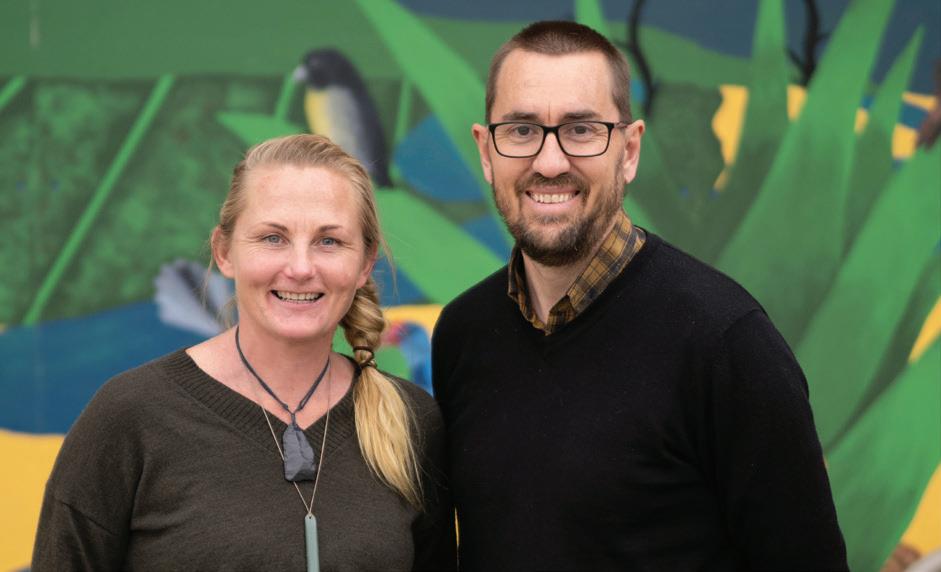
“The interesting thing about the Relationships First programme is you have a good relationship, but it’s built on some good pedagogical experience and practice. That means I’m going to have a strong relationship with that student but I’m not just there to be a friend.”
increase capacity to move their practice to the northeast corner.
In Impact Coaching, trained coaches identify positive examples of relationship-building strategies in the classroom, while also looking at things that might be getting in the way of those relationships. The coaches engage in a series of observation and coaching cycles – a cooperative and collaborative model which can eventually be mirrored between teacher and student.
To keep the project self-sustaining, the mechanisms of the kāhui ako: across school teachers (AST) and within school teachers (WST) have been used to lead peer to peer Impact Coaching.
“It gives teachers time to stop and reflect with an independent person. It doesn’t have to go into your appraisal, principals didn’t know what those conversations were. It was non-judgemental,” says Ali.
“Voice is one piece of the data: there’s all the other data – specific things you should be looking at. When you have any alarm bells going off in those areas, everything else is designed to help lift that, whether it be Impact Coaching, PD around effective teaching strategies, or Northeast Hui (group coaching meetings) to focus on priority students or collecting voice to monitor what’s going on,” explains Heidi.
Many of the Motueka schools and kura have now done three annual rounds of voice collection and John says there has
been a noticeable mind shift for staff.
There was a change from deficit thinking to, ‘OK, I’m having trouble engaging the student, we need to find more relevance for them’, and ‘What needs to be fixed for the student before they can come to my class?’
“It was a really good mind shift and that is indicative of the northeast corner – the teacher and the school have to manage that relationship,” he says.
Hearing the disengaged student voice has been powerful, says Ali.
“We use lots of different mechanisms to allow voice. It’s often a class-by-class approach, or circle time, or, what’s fed through your student council.
“For example, we had a student who wasn’t progressing. I asked him what was going on and he said that he couldn’t read the teacher’s handwriting when she marked his work. It was such a simple thing to ensure he can read the teacher’s handwriting and he felt really good that I was able to intervene.
“It’s about empowering students and teaching them how to approach things respectfully. It’s not just a one-off, it’s growing a school culture that shows teachers are prepared to listen,” she says.
Head of English at Motueka High School and across school teacher Nich Campbell has been teaching for 20 years and says that at the beginning of his career, he was advised “not to smile before Easter”. Now he doesn’t have a teacher’s desk
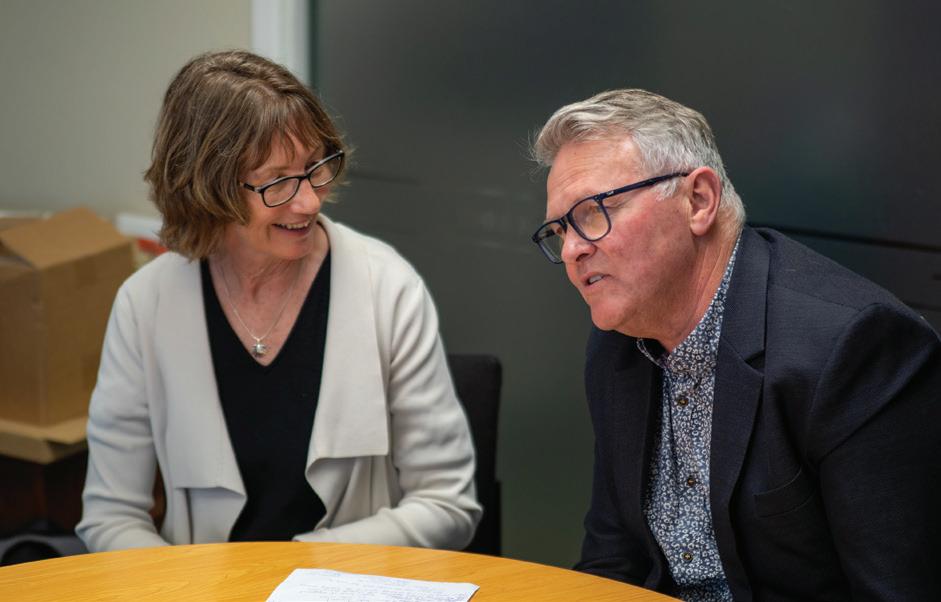
in his classroom so that the power dynamic is more evenly shared.
“The interesting thing about the Relationships First programme is you have a good relationship, but it’s built on some good pedagogical experience and practice. That means I’m going to have a strong relationship with that student but I’m not just there to be a friend. I’m actually going to have high expectations, which is another part of that profile.
“Now I can still control my classroom and make sure that everybody is safe and on focus. It’s MUCH nicer teaching than when I started teaching. The students still look to you as a teacher for that understanding and knowledge and you are using that experience and structure but also thinking ‘how do students feel they can be part of that process as well?’” he says.
While the number of priority students has not decreased overall, Grant and Ali believe that teachers know how to handle them better and agree that a powerful part of Relationships First for teachers is the collegiality.
“Teachers will go and talk with other teachers first –saying ‘Johnny is always late, is his brother always late too?’ They’ll have a shared discussion about who will ring Mum. They’re not taking it on themselves to do everything – we’ve always done a bit of that, but it helps teachers to be more proactive,” says Ali.
“The strongest thing is that it’s now ‘we’,” says Grant. “Because when I was in the classroom it was my problem and then you would pass the tricky students on at the end of the year, or the deputy principal got the behaviours, but we now say ‘these are our kids’.”
Has this kāhui ako-wide mahi met, or exceeded, expectations?
“We started thinking we were on a trajectory – teaching to the northeast corner – and of course we’re still on that, but it’s much wider than a line heading in one direction because lots of other things have fallen out which have enabled more positive relationships,” Ali replies.
Better systems include primary schools and the high school working more closely on transition, co-construction meetings within schools, and teachers within and across schools sharing concerns and problem-solving about students.
Tim de Vries, principal of Tasman Bay Christian School, is the new kāhui ako lead and says that while each school is at a different stage of their journey, most are beginning part 3 – monitoring and assessing the impact of Relationships First. The next focus will be on embedding and sustaining Teaching to the North-East
“It’s about taking it beyond just the school walls so boards and our communities understand the process – not just about the strong relationships but our powerful teaching work as well. And it’s about providing opportunities for teachers in our kāhui ako to find experts so we can find shared threads and come together and learn,” he says.
Teaching to the North-East is based on Dr Bishop’s work, Culture Counts, which recognises the importance of cultural identity in schools and for learners. The approach informs teaching practices which utilise students’ prior knowledge and language, rather than treating these as barriers to learning.
Relationships First is a culturally responsive practice that focuses on accelerating and sustaining the achievement outcomes of indigenous and marginalised students.
The programme is divided into three parts:
1. Relationships for learning
2. Effective teaching pedagogies
3. Tracking and monitoring the impact of the approach.
Based on Dr Bishop’s Te Kotahitanga, the collection of rich data and peer coaching aims to help schools reach sustainability.
Te Kotahitanga was a Ministry-funded PD programme throughout the 2000s that:
» supported teachers to improve Māori students’ learning and achievement, enabling them to create a culturally responsive context for learning which is responsive to evidence of student performance and understandings
» enabled school leaders, and the wider school community, to focus on changing school structures and organisations to more effectively support teachers in this endeavour.
“It’s more than cultural competence, the focus of our work has been on relationship-based learning – the underpinning philosophy and pedagogy which resonates with all of us. A big part of that is that what is good for Māori students is good for all students,” concludes John.
Read more:
Reading Recovery is undergoing a refresh. We’re retaining our core values of active learners, responsive teaching and student-centred lesson design. We’re also building on them to include more support for more learners.
Reading Recovery was designed as an early intervention to notice when students need something different to help them learn. With a small amount of extra support each day, children bridge that gap so that they can keep pace with their Year 2 classmates.
In Aotearoa New Zealand, over 8000 Reading Recovery teachers have helped more than 350,000 students become confident, independent readers and writers. Reading Recovery has over 40 years of research and evaluation results to demonstrate its efficacy worldwide. An evaluation of New Zealand Reading Recovery indicated that we are effective in improving literacy levels for the children we teach. The evaluation also indicated that Reading Recovery is no more expensive for schools than many other supports. While the training is highly valued by schools, fewer are using Reading Recovery because demand for support exceeded what could be provided.
The challenge was finding a way to serve more students and to make a wider impact on school literacy levels. We also needed to build in recent research about literacy and effective interventions.
As a result, since 2021, National Reading Recovery has been evolving the way Reading Recovery is delivered in schools to enable stronger and more equitable outcomes for children. Building on the success of its one-to-one approach with children, it now offers
a three-tiered support framework that will enable a broader range of children to access literacy support. At each tier, the instruction is increasingly tailored to children’s learning. Assessment and ongoing observation is used to tailor how teachers respond to children’s learning.
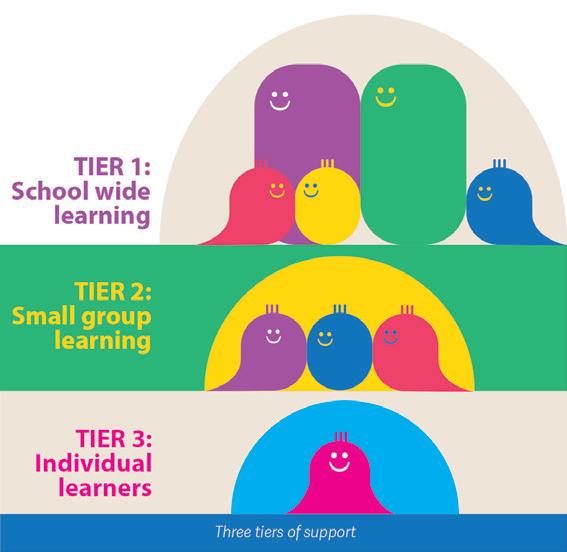
We know there are no simple quick fixes to support all learners, so we are building systems for collecting, analysing and using evidence to self-improve. Our solution is embracing complexity. For multifaceted, complex and long-term issues, there aren’t silver bullets or simple solutions. Instead, it's a collective, joined-up response.
Highly skilled teachers make responsive decisions based on evidence. Teachers draw on what they know about the child and how the child is making sense of literacy, in order to support them to learn. Ultimately, it’s all about teachers problem-solving, collaborating and sharing expertise.
Put together, it is planning effective, balanced school-wide programmes that build children’s love of literacy and self-confidence in learning.
We’ve started this transformative process and have had some great feedback and exciting results from schools. One Associate Principal said:
“It’s a framework for freedom, which we can change as we need to. We’ve found it gives us more reach, so rather than one kaiako alone navigating the range of challenges, we’re supporting each other, which means intervention and support comes earlier, and kaiako share an integrated and aligned approach. That’s what we’re seeing in our results, even at this half-year mark; our ākonga are having great results and movement in literacy.”
We’ve also implemented educational science processes, to ensure that we continue to self-improve. This includes more frequent reporting on child literacy development, monitoring progress and more support for the teacher network.
We aren’t there yet, as there is always more to be done. Ultimately, what we can contribute to schools are highly trained teachers making catalytic teaching decisions with colleagues, building on the strengths of students, families and communities. That’s the complex world of teaching.
Reading Recovery now has a 3-tiered Early Literacy Support framework to improve early literacy outcomes at an individual, small group and school-wide level.
Specially trained Reading Recovery teachers will work alongside tumuaki, kaiako and whānau to deliver the right level of support based on the child’s individual learning needs.
To learn more about our success to date, scan the QR code or visit: readingrecovery.ac.nz

Funding applications for 2023 are now open! To apply, visit:

Stronger Readers together

When Rangitoto College first took on establishing Pīpīwharauroa – Festival of Mātauranga for the Mid Bays Kāhui Ako, there were a great deal of unknowns. The North Shore college wanted to explore how mātauranga Māori could be woven authentically through the curriculum, while still figuring out what that meant.
There is a new mandate in education to bring mātauranga Māori into all curriculum areas, but what does that look like and who is leading the way? These are questions that Rangitoto College sought to answer when it staged its first Pīpīwharauroa – Festival of Mātauranga in September. Rangitoto College kaiako started the journey in March when they reached out for support from Auckland Museum Tāmaki Paenga Hira staff and Unitec staff. Together they explored how to engage ākonga in whakapapa and mātauranga and create a meaningful connection to te taiao.
“Indigenous knowledge systems, including mātauranga Māori, are sought to help us meet the challenges of our rapidly changing world and we see ourselves as part of that change,” say festival founders Kataraina Simpkins, across school lead for mātauranga Māori, and Sarah Galbraith, in school lead for mātauranga Māori.
“The Pīpīwharauroa Festival of Mātauranga is a seed of what we can achieve when we weave together our different worldviews, to ‘whakaoho tangata, whakahauora ngākau’ – awaken the people and reinvigorate our hearts,” they say.
The early spring festival was the culmination of cross-curricular mahi throughout many classrooms of the kāhui ako. For the previous six weeks, kaiako and ākonga had been exploring through the lens of mātauranga Māori and preparing to stage the results for their community. Nine schools and 15 local early learning services were invited, a total of 1,500 students and 50 kaiako throughout the day.
Timed for Te Wiki o te Reo Māori, the festival miraculously coincided with both the first mask-free day in more than a year and the first sunny day after weeks of heavy rain.
Outside, visitors flocked to watch kapa haka, buy food from the Year 10 commerce stalls, explore science with experts from Auckland Museum and Unitec, and to try mātauranga Māori activations hosted by Auckland Council.
Inside was a stunning collection of artworks inspired by the kōrero tuku iho about the pīpīwharauroa (shining cuckoo) and the pebbles, mahi by ākonga ages four to 18, side by side.

“Mātauranga is a way of being,” says Kataraina. “Through the festival we wanted to explore a way to develop a willingness to engage in mātauranga Māori by walking alongside our kāhui ako, to show our community, from early learning services to secondary school, how mātauranga can be threaded through an authentic concept.”
Sarah explains that they envisage the festival as an annual event for the kāhui with each year building on the last. The learning journey would run on a three-year rotation following the thread of mātauranga through pūrākau and kōrero tuku iho connected to the Pīpīwharauroa.
Melinda Bennett, kāhui ako lead and principal of Murray’s Bay Intermediate, says it’s not just about the one day, but all the learning that has gone into it.
“It has been awesome. Every school and every teacher has been able to dip in as much as they were able. The timing was a little bit tight, so some schools are just dipping their toes in, but we thought it was better to start on a small scale and then grow it.
“I think everyone’s on a journey. Certainly, in our school, with every unit of work we ask, ‘What is the mātauranga Māori view in the learning in which we’re about to engage?’”
Two online kete were created by Sarah and Kataraina for kaiako as a resource to begin the journey into mātauranga Māori, one for Pīpīwharauroa and another for Maramataka.
They were also given a professional development art unit created by art teachers Jess Langley and Diana Tuisalega to support the Pīpīwharauroa art exhibition, and kāhui teachers were also given ready-to-go, differentiated lessons for Years 0 to 8 in Te Reo Māori, Social Science and Science. The emphasis was on whanaungatanga – a shared journey through learning.

For Rangitoto College principal, Patrick Gale, the Pīpīwharauroa Festival was an exciting start to their mātauranga Māori journey.
“It allows us to tie multiple aspects of our curriculum together with a common purpose and a common theme to ensure we develop our understanding and our confidence to engage in this journey.

“We are really excited about what this means for our future. We know that our level of engagement and the depth of understanding will increase over time. We’re hopeful that more schools will join us on the journey and that we can extend the reach of this project to ensure that more people will see the huge benefits that mātauranga Māori brings for our schools, and more importantly to our communities.”
Ākonga from across the community performed at the festival, from early learners through to secondary school seniors, bringing with them whānau and hapū.
Top: Tāmaki Paenga Hira Auckland Museum science tables connect ākonga to te taiao.
Middle: Whakairo work from Rangitoto students on display.
Bottom: Rebecca Bray, senior collections manager Natural Sciences, interacts with kāhui students in the museum tents.
Photos by Richard Ng, Auckland War Memorial Museum Tāmaki Paenga Hira.
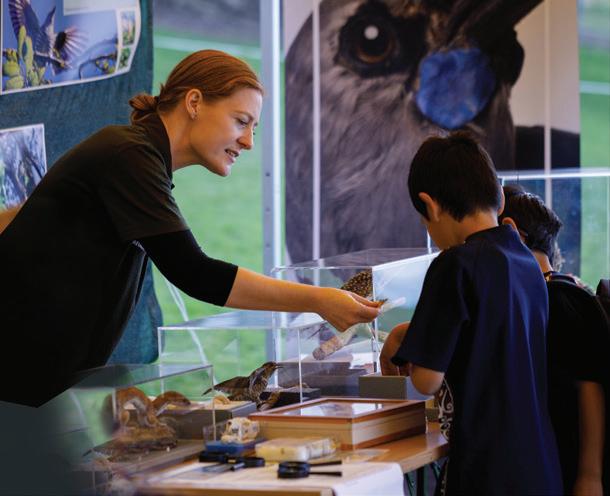
Rangitoto parent Katrina brought her three younger tamariki and her sister to watch her 14-year-old son perform.
“This is a special occasion for our whānau. The little ones are very excited to visit their big brother’s school and see him on the stage. He did so well. He’s a quiet person but through this he has gained a lot of confidence. He’s more talkative, he is speaking up instead of staying in the background.”
Year 11 dean Kane Wilson says the kapa haka performances gave all ākonga a chance to shine.
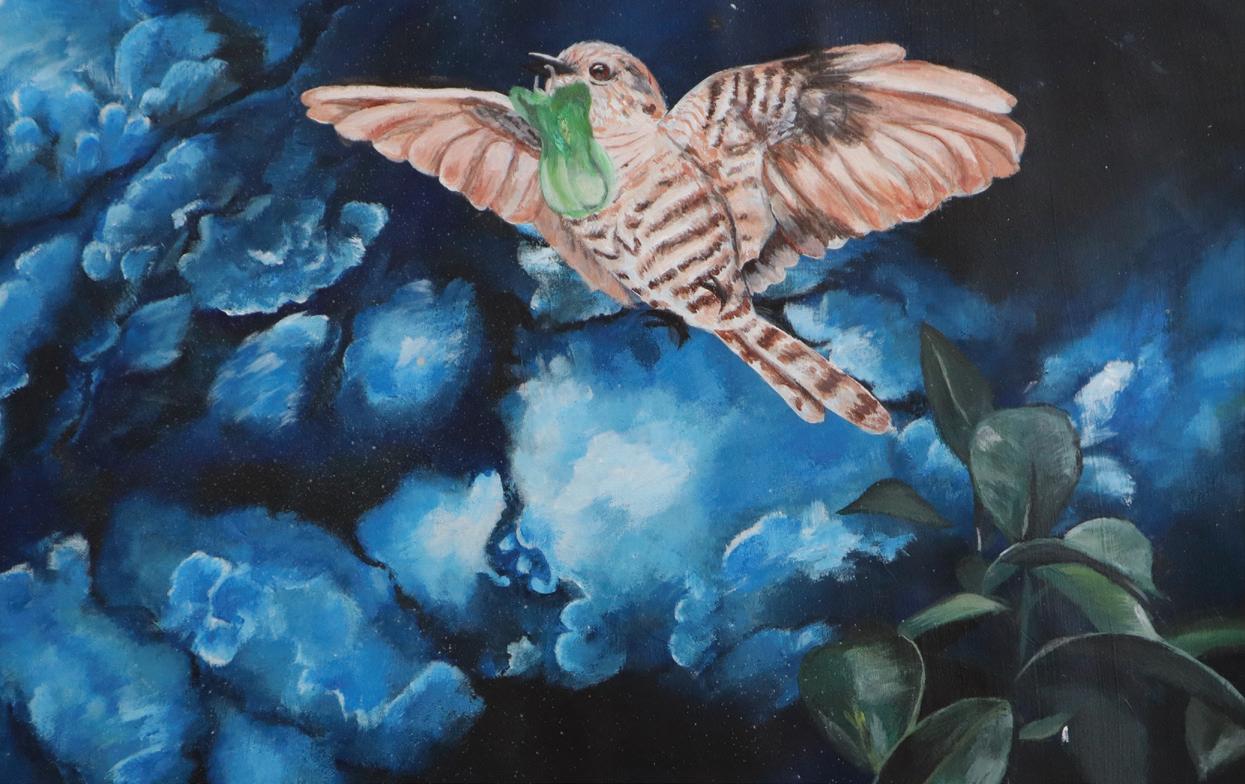
“It’s very special seeing all those little people up on the stage cracking into it. They are building their leadership capacity. And having done it here at this school means they won’t be scared to come back. When it comes to doing stuff at a serious senior level, Polyfest for example, they won’t be shy, they’ll just go through and be themselves.”
Mairangi Bay principal Nathan Janes beamed as he watched his school’s kapa haka group perform.
“It’s special to be able to celebrate who we are, especially during Te Wiki o te Reo Māori, but also to be able to build on the strengths of our community and really honour the principles of Te Tiriti around protection, participation, and partnership. And we’re just excited about the prospects for the future, for our tamariki and embracing who we are.”
Fay Meiklejohn, curriculum leader at Rangitoto College, reflects, “The Pīpīwharauroa Festival, with its academic elements, is the beginning of our journey with mātauranga Māori. It is exciting to use the festival as a vehicle to engage learners in mātauranga through experiences in and out of the classroom. Mātauranga is a taonga, and I feel very honoured to be one of the kaitiaki responsible for esteeming it.”
this fully-funded Strengthening Asia-Pacific Language Teaching

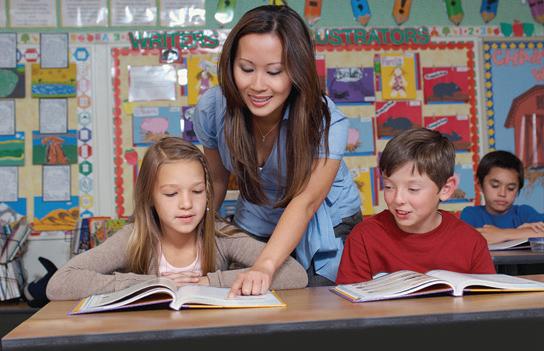
North Asia programme (SAPLT-NA).
from collaborating with expert facilitators
teachers
improve
outcomes for
workshops,
“It’s special to be able to celebrate who we are, especially during Te Wiki o te Reo Māori, and also to be able to build on the strengths of our community and really honour the principles of Te Tiriti.”
Nathan Janes
Do you teach ChineseMandarin, Japanese or Korean in your school?
Introduction
This year Te Taura Whiri i te Reo Māori invites all schools to record and share your stories of te reo Māori.

The battle for te reo Māori has been fought by generations of people, from our smallest towns to our biggest cities. On our televisions, in our schools, homes, in our sports and culture clubs and workplaces. These stories need to be told and saved for future generations.
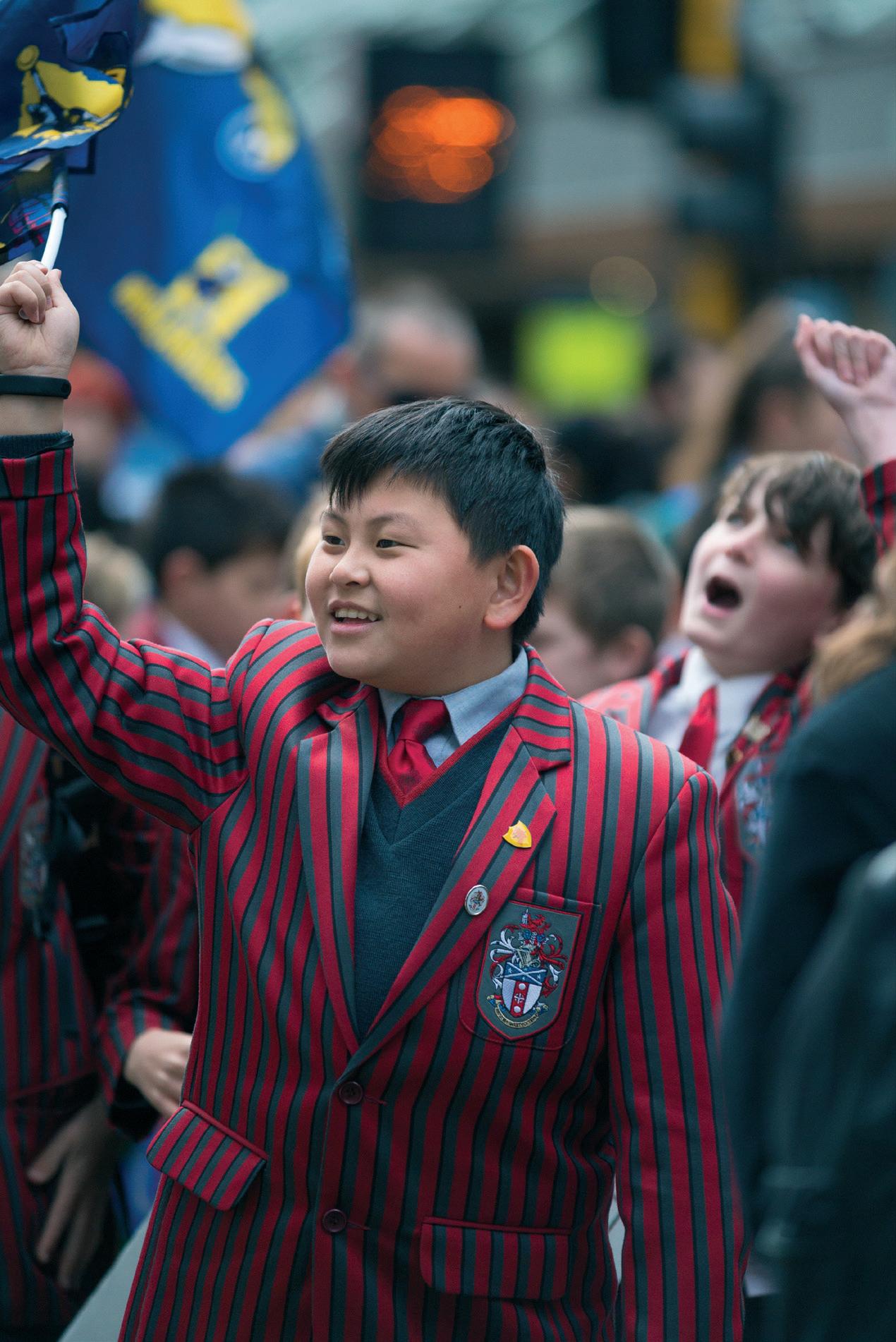




tēnei tau e pōhiri
Taura Whiri i te Reo Māori i ngā kura kaupapa Māori, i ngā kura
te kōrero hoki
me ngā kura Māori ki te hopu,
reo Māori.

te reo Māori e ngā whakareanga maha i ngā tāone iti ki ngā tāone
I okea te pakanga
Ko ngā kura ētahi o ngā tino kauhanga o te riri mō te reo Māori. Me whakanui e tātou ō tātou tīpuna, ā, me kōrero, me pupuri ēnei kōrero
ngā reanga o āpōpō.
Individualised professional development for teachers of Pacific learners is helping schools to build cultural competency and address inequity.
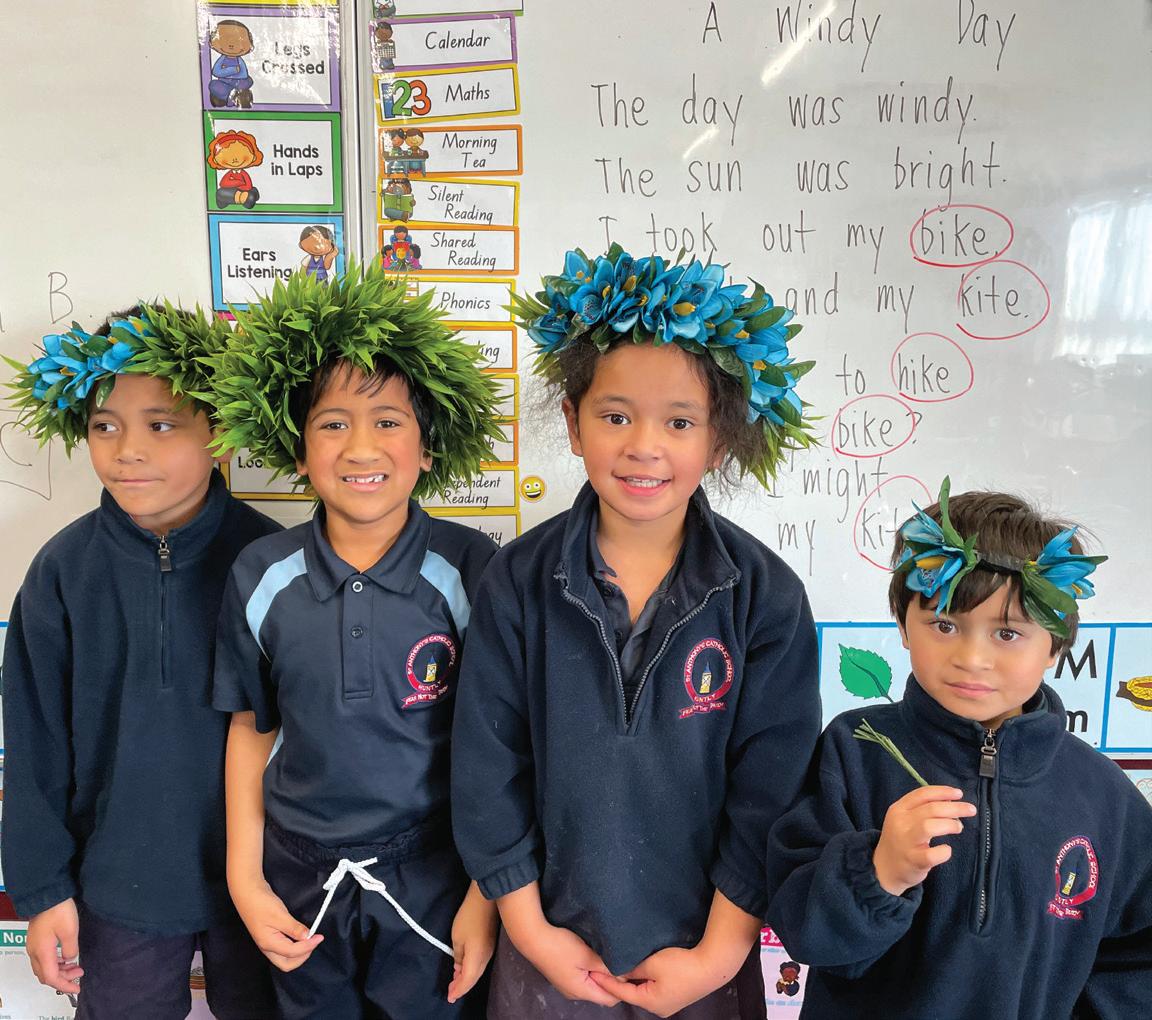
In the north Waikato town of Huntly is a small school, notable for several reasons. St Anthony’s Catholic School has a roll of just 48 yet is ethnically diverse with 75 percent of ākonga identifying as either Māori, Pacific or Asian (Filipino). It’s a community united by the Catholic Christian faith and a shared understanding of financial hardship.
Against this backdrop, principal Dr Kevin Kannan prioritises ākonga wellbeing as fundamental to engagement, saying the philosophy that he and the staff live by is that ‘a happy child, is ready to learn’.
When Covid struck, Kevin was quick to apply for help from Te Tāhuhu o te Mātauranga | The Ministry of Education’s Pacific Education Innovation Fund.
“I said, ‘Look, I really need to look after the Pacific children. Inclusiveness and cultural identity are very important to them, and we need to provide arts, crafts, music and so on to keep them going during the pandemic.’”
Early this year, Kevin explored further support for Pacific learners through Tui Tuia | Learning Circle (Tui Tuia), University of Auckland’s education PLD provider, to offer free professional development to unpack the Tapasā framework.
Culturally responsive Tapasā, a cultural competencies framework, is a tool that can be used to build the capability of teachers of Pacific learners across the education sector.
Tapasā Professional Learning and Development (PLD) is designed to support leaders, teachers, kaiako and boards of trustees to engage with Pacific learners, their families and communities in culturally sustaining ways. Tui Tuia and Tautai o le Moana – Wayfinders of the Ocean are the two providers contracted to deliver Tapasā PLD.
“I grabbed the opportunity straight away,” says Kevin. “I invited [Tui Tuia lead facilitator] Tofilau Niulevaea Siliva Gaugatao to our school right from term 1. Siliva said, ‘Kevin, this would be lovely because your teachers are of non-Pacific ethnicity and you have so many Pacific children, and your school takes such good care of them pastorally.’
“They have come in twice a term. For the first visit, Siliva brought the team from Auckland University, and they did full classroom observations in each room. They honed in on the concept in terms of professional standards teaching criteria and industrial management, how teachers cater for their Pacific children.”
Kevin says Tapasā reminds him of Te Kotahitanga, a research and PLD programme that helps teachers better support ākonga Māori learning and achievement by creating a culturally responsive context for learning.
“Te Kotahitanga is a beautiful document about having good relationships with ākonga Māori,” says Kevin. “Tapasā is the same for Pacific learners. It’s four years old now and it is great to have PLD to help educators support Pacific learners.
“In my experience, Pacific families are blessed with two things: one is they have great dignity for work and the second is that they and their aiga have a place in their hearts for education. They want their children to do well.
“If people are serious about Tapasā, and principals like me take the opportunity to have the framework unpacked to their staff, then all second-generation Pacific children in this country will have no educational achievement and progress problems at all 40 years from now.”
Yvonne Lim, the director of Tui Tuia, says the Action Plan for Pacific Education (APPE) is a strategy to ensure learners, families and communities enjoy educational success as Pacific.
“Building Pacific cultural competencies across the education workforce is one of the APPE’s key objectives.
“We know that the education system can do more to ensure equitable outcomes for all learners and their families. Tapasā PLD supports teachers’ journeys towards better understanding the identities, languages, and cultures of Pacific peoples.”
Tui Tuia has a collective expertise in Pacific education, led by Tofilau Niulevaea Siliva Gaugatao and Dr Tanya Wendt Samu, senior lecturer at the University of Auckland’s Faculty of Education and Social Work. Both have been studying and developing teacher education initiatives based on Tapasā since its release in 2018.
“Underpinning our approach to delivering Tapasā PLD is that it is informed by Pacific knowledge, ways of being and approaches to practice that are researchinformed, led by a teacher’s strengths and empowering for all participants involved,” says Siliva.
“Our approach is flexible, responsible, and reflective, in other words, ‘one fits one’. We will tailor the initiative to the strengths and needs of individuals and groups of teachers and leaders and their learning journeys.
“We know the education system can do more to ensure equitable outcomes for all learners and their families. Tapasā PLD supports teachers’ journeys towards better understanding the identities, languages, and cultures of Pacific peoples.”
Yvonne Lim
“Our hope is our Tapasā professional learning and development initiative will be a transformational tool to uplift and support teachers and leaders across the education sectors to achieve the vision for Pacific learners, their families and communities.”
Tautai o le Moana is the educational arm of the New Zealand Pasifika Principals Association.
Director Helen Varney says Tapasā could be seen as just “another framework” until it is brought to life through the hearts and minds of educators who understand and want to action their ‘Why’.
Tautai o le Moana, through Tapasā, are engaging schools to take on – what is, for many – new knowledge; a journey that is helping them develop a critical mass of shared knowledge, respect and ‘feeling’ for their Pacific communities, and Pacific nuances resulting in actions that will improve the educational pathway for their learners.
Principal of Dominion Road School Lesley Mitchell is working with Tautai o le Moana to strengthen leadership capabilities. A key element of this journey for Lesley and staff is to effect positive change for learners of Pacific heritage.
“About 36 percent of our students identify as Pacific as their first ethnicity. This does not take into account any who have not identified as Pacific as part of their second ethnicity. Tongan is the biggest ethnicity when it is broken down further. Our goal as a school is to ensure that we are
culturally responsive and ensure equal opportunities for learning for all children,” says Lesley.
Tautai o le Moana believes that growing and strengthening a Pacific lens is a crucial element to the success of kaiako in and through Tapasā.
“A key pathway is strengthening community partnerships (Turu 1) – recognising, valuing and engaging with their Pacific community. Pacific communities are the experts and are critical partners in growing this lens. Understanding and acknowledging the ‘va’ and respecting that their learning journey must include close connections with aiga and whānau,” explains Helen.
At Wesley School, principal Lou Reddy sought to further strengthen their journey through Tapasā.
Lou says they “want our students to lead through their cultural strengths. We hope that the Tapasā framework is a way to help us as teachers to set the environment and actions to do this reliably.”
At Wesley, talanoa is a key element of the connection kaiako have with aiga. The conversation, chat, sharing of ideas and talking with aiga about learning has shifted there.
“Talanoa is child led and in the language they choose. They themselves translate to their teacher. They discuss what they have learnt and future learning goals. Students have an awareness and knowledge of their identity and culture. They are teachers and leaders.”
St Anthony’s Catholic School in Huntly has a roll of just 48 with 75 percent of ākonga identifying as either Māori, Pacific or Filipino.
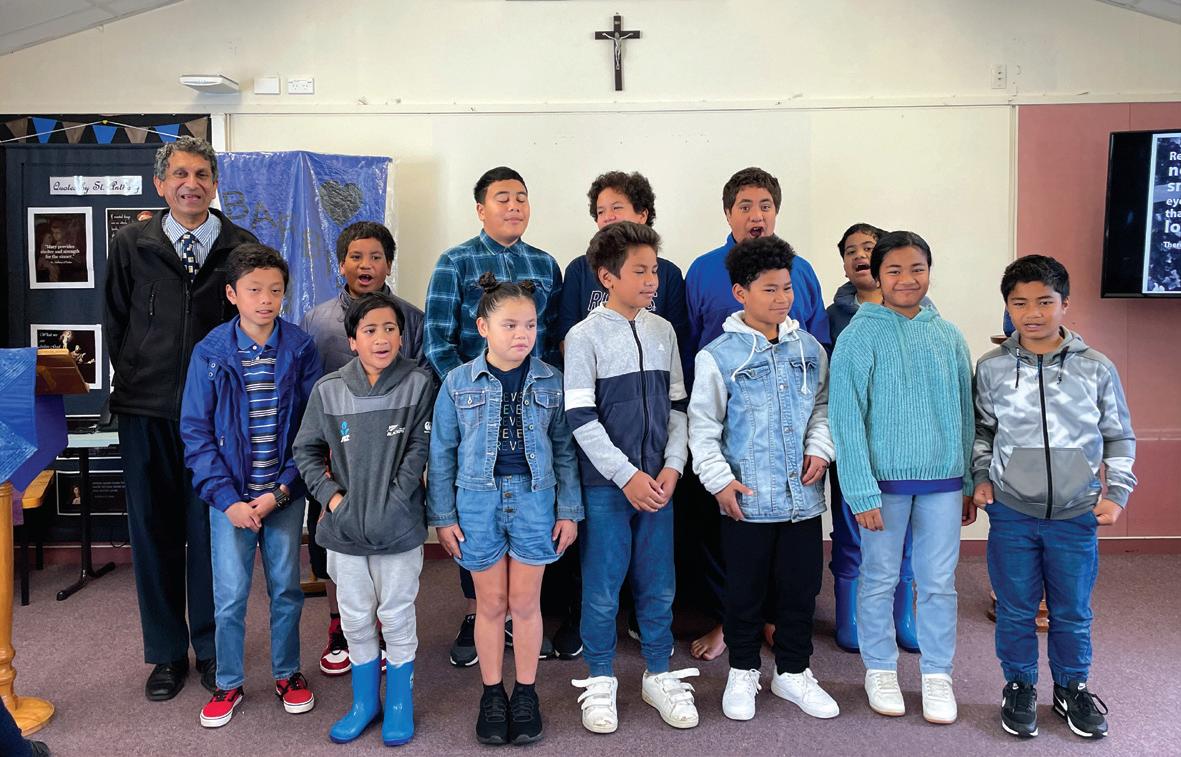
It starts at early learning
The approach is striking a chord for kaiako at Hastings early learning centre, Taokotaianga Apii Kuki Airani Hastings Inc (Takah). Centre manager

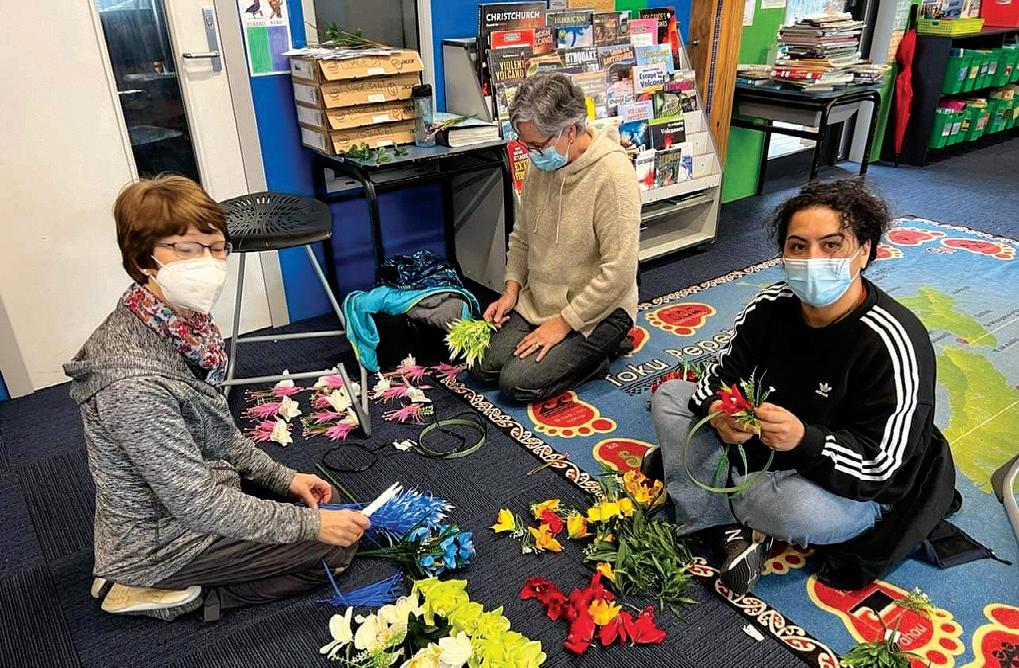
Kimiora Joel and her team have had two sessions with Tui Tuia and feel greatly encouraged by the support.
“We loved the team coming in to see where we needed help. We talked about our understanding of Tapasā and what we wanted to know, and we loved how they listened to us, they wanted to understand where we were coming from,” says Kimiora.
“They’re helping us with our centre goal, which is strengthening our relationships with our wider community. They are helping us to see from a Pacific perspective using Tapasā as the tool to support us. They helped us break down the framework so we can deliver it to the children and reach out to our Pacific parents.
“In our wider community the consistency of engagement is not there and the Tapasā PLD team is helping us with that.”
Collaborate with other teachers of languages and grow your skills in:
• effective language teaching pedagogy to future-proof your teaching practice
• creating and using effective resources for language learning
• developing sustainable languages programmes for your school.
To see the full list of our GROW Programmes, head to www.learningcircle.co.nz or scan this QR code.

Tapasā PLD is co-delivered by Tui Tuia Learning Circle and Tautai o le Moana Trust. Schools who want to join should contact one of the providers or email
Register your interest today!
Applications close on Friday 18 November 2022.
In a previous issue of Tukutuku Kōrero, we outlined the new Whakatipu course at Outward Bound. In this issue, we look at the experiences of two students who took part.

The Whakatipu course at Outward Bound supports rangatahi who are on a vocational pathway from education to employment. Two students who are reaping the rewards of the workplace skills course are Ben Corlett and Tamara Hesketh.
Tamara is a Year 13 student at Taipa Area School. Having completed NCEA Levels 1 and 2, she is now doing a Gateway hospitality course through workplace training specialist Service IQ. The course includes a work placement, and for Tamara, that is taking place at Wild Nekta café in Taipa, Northland.
Tamara’s study and work placement reflect her passion for hospitality, in particular the food industry. Her passion bloomed in 2021 when she was chosen to represent Taipa Area School in the regional section of the National Secondary Schools Culinary Competition in Auckland.
Her competition challenge was to create an entrée using only broccoli (other than sauces and accompaniment). Through creativity, hard work and determination, Tamara won her section, and a place at the National Competition which was unfortunately cancelled due to Covid.
“I just thought, ‘why not?’ Might as well take the opportunity. We practised for weeks doing the cooking contest, and we went down to Auckland and I ended up winning.
“I thought, ‘I’ve got to keep doing this’, so I’ve just carried on with creating dishes and I just feel good making food for people,” explains Tamara.
Her work placement is helping to develop industry skills at a practical level, and the ability to learn on the job allows her to discover what is required in the hospitality industry.
“I’m learning so many new things such as communication skills, being customer friendly and being under pressure when making meals and stuff. It’s really training me up.”
Tamara’s communication skills and ability to work under pressure have been further developed through her participation in Outward Bound. She says she was uncertain about doing the course, but realised she needed to seize the once in a lifetime opportunity.
The high ropes provided many challenges.
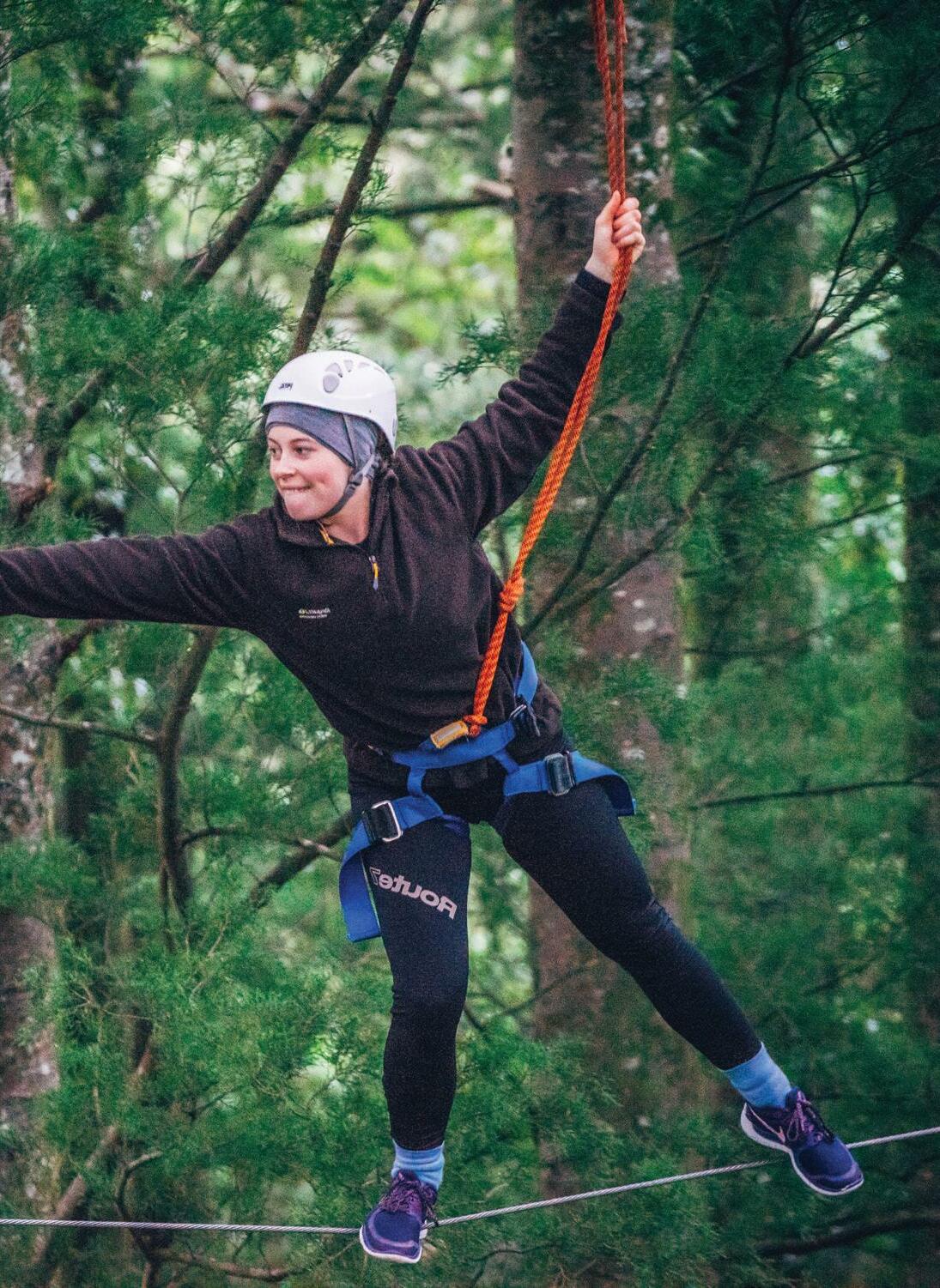
The benefits have been life-changing.
“They taught me to have a voice. I used to just stand there and listen to what people told me to do. Now I have more confidence to speak up and say my opinion, even if it is wrong, it’s good to just put it out there,” she says.
This ability to speak up and be confident was the start of the journey to learning leadership skills, which are important if Tamara is to achieve her dream of running a kitchen. Alongside this, Tamara learned how to step out of her comfort zone to achieve results. For Tamara, a key moment was at the start of the course when everyone had to jump off the side of a boat into the water. It was in August, so the water was cold.
“Some people had never been in this type of cold weather before because they’re from the city and so they would freak out and everyone would get a bit nervous. For example, we had to all wait patiently in the water for this one person to calm down and it was challenging because you’re freezing, and you want to get out of the water.”
From this experience Tamara learned patience, a virtue
that was continually tested with other challenges. One of which was being paired up for a high tree challenge.
“We were getting up there and my buddy wasn’t very confident up in the trees. So once again, it was just being patient with them and just encouraging.”
Tamara has been able to transfer the skills she learned with Outward Bound to her work placement.
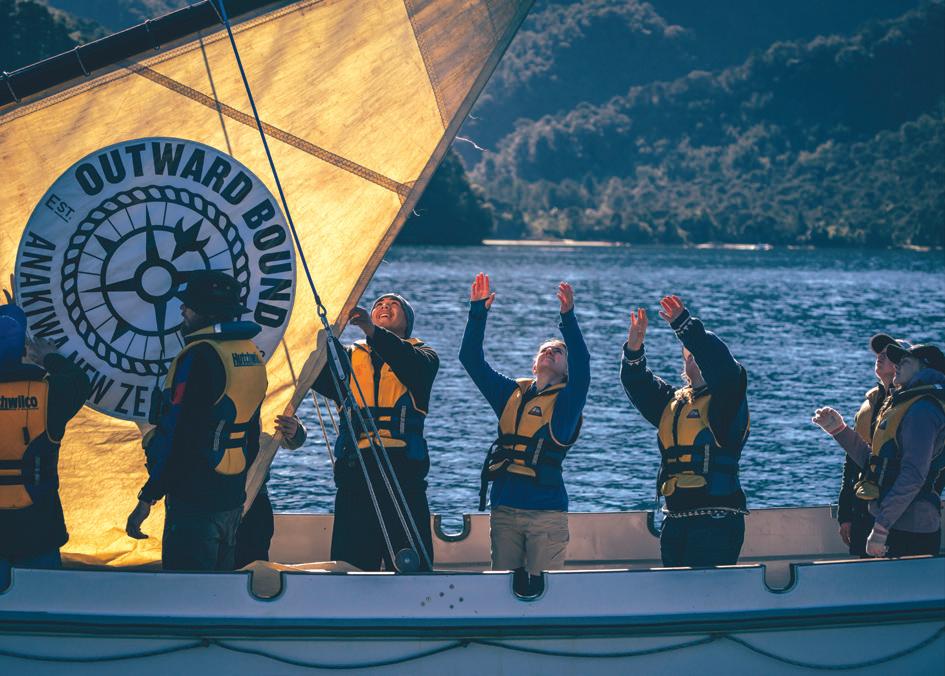
“I challenge myself so I have the confidence to do stuff out of my comfort zone and I now appreciate being patient and leading. I take that into my workplace because it’s a big thing in trying to be a chef.”
Tamara’s employer Hannah Thompson has also noticed a difference.
“Since returning from Outward Bound Tamara has taken on more. She steps up and manages things when I’m away and is a good role model for the other staff.
“She’s grown in confidence; she now tells the other staff what to do and is more upfront and open about discussing her view on things.”
Tamara is looking at joining the Navy to pursue her
“I challenge myself so I have the confidence to do stuff out of my comfort zone and I now appreciate being patient and leading. I take that into my workplace because it’s a big thing in trying to be a chef.”Both Ben and Tamara enjoyed the boating activities.
cooking career, as well as travel. Her ultimate dream is to have a Michelin star restaurant. Her advice for students considering Outward Bound is to take every opportunity as they will not regret it.
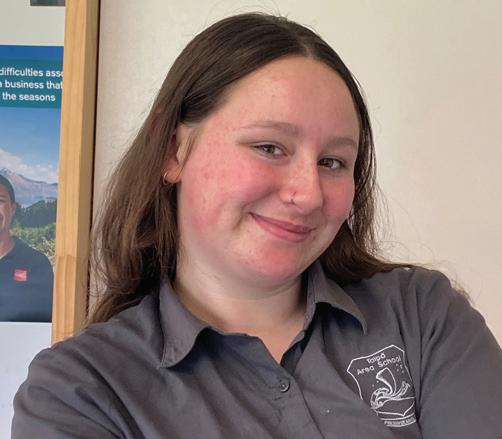
Teamwork makes the dream work
Ben is a Year 12 student at Wellington College, and a keen sportsperson selected for a Wellington under 16 representative team. He also enjoys the outdoors, including tramping.

A Gateway course and work placement are supporting Ben to pursue his aspiration to become a plumber.
“Every Wednesday I go out with a plumbing company, and I do a day’s work with them. Obviously, I don’t know how to do it all and I’m still learning so I just watch sometimes and then help where I can.”
The work placement has given Ben an insight into scheduling jobs and organising transport, as well as the skills and requirements for a variety of plumbing jobs. Ben says he has seen the importance of teamwork for a career such as plumbing, and so was thrilled to be accepted into Outward Bound.
“The main reason that I wanted to do Outward Bound was to develop myself as a person and be able to work better in a team.”
The eight-day course certainly provided many activities to do so, with Ben saying, “We did team building activities every night and we would have classroom sessions to learn more about how to work as a team.”
The concept of team building was not just confined to classroom sessions. Ben observed that on the first day when they went sailing, people were not talking too much as they did not know one another. He then recalls the same key moment as Tamara, about how later in the day, everyone had to jump into the freezing cold water. After that experience, he says people started to bond.
“That taught me that if you experience something with someone such as going through pain or something difficult, where you must push your boundaries, then you bond with them. So that gave me insight into team building.
“It also taught me about resilience, because a lot of stuff we had to do used a lot of resilience to keep going.”
One activity that really tested the resilience of Ben and others was an overnight camp. Ben recalls it being wet and cold, and that the students did not have a track to follow and instead had to use a map and compass to find their way. That evening, they had a session to talk about how to unpack the activity and how to deal with challenging situations.
“One thing was having a positive mindset. So just staying positive, not thinking about the negative. Another one was being optimistic and thinking on the bright side to enjoy the moment.”
Mike Ellett, one of Ben’s teachers, says since Ben has come back from the course, he has been sharing his experiences with teachers and other students.
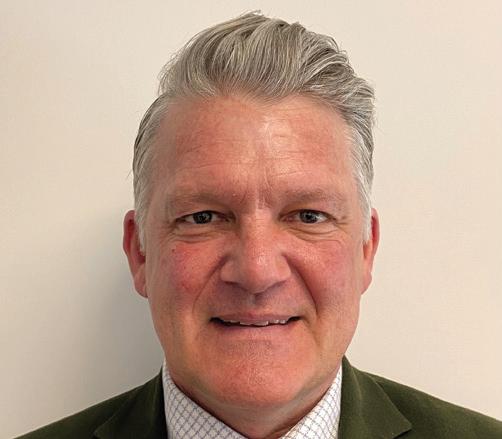
“He’s been telling me that, when you’re down or when you’re not quite performing at your level, you have got to keep going, work your way through that and try and focus on the positive things.”
Realising the opportunities of school Mike has been delighted with Ben’s progress since doing the Gateway and Outward Bound courses. Initially at the start of the year, Ben was not interested in coming back to do Year 13, wanting to instead focus on getting a fulltime apprenticeship. However, he has since changed his perspective.
“As the year has progressed, his rugby and his schoolwork has progressed. I feel that doing the Outward Bound course really opened him up to what is available
out there. He’s virtually got his NCEA Level 2 now which is great and I think he knows that he can quite easily achieve Level 3,” explains Mike.
Mike has also noticed that Ben’s attitude, while always positive, has shone even brighter. He actively engages with the other students and looks to ways in which he can help.
This has even included acting as a model for fellow Gateway classmates who, inspired by having work experience at a barber shop, decided to practise their newfound skills on each other.
“He’s got the all the standards of honesty and integrity, he always comes across as a guy that I can really see a plumbing company throwing the keys to some very expensive gear and vans and trusting him, he’s just that kind of guy,” says Mike.
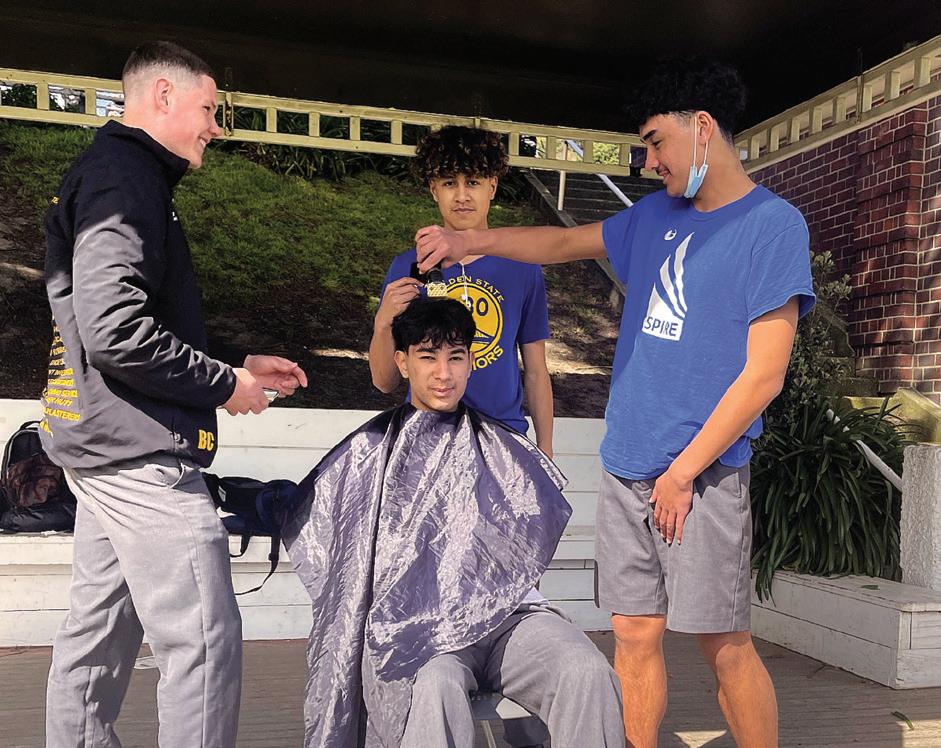
“That taught me that if you experience something with someone such as going through pain or something difficult, where you must push your boundaries, then you bond with them. So that gave me insight into team building.”
Ben CorlettBen and his fellow students practising barber skills.
The students engaged in team building activities.
Wellington College kaiako Mike Ellett is proud of Year 12 student Ben and says that he is a good example for others undertaking an employment course like Gateway, designed to shape the future direction of a student’s pathway.
The courses start by doing basic things like preparing a CV, researching areas that students are interested in, and mapping out a pathway from the classroom to a career. The nature of the courses means there is a lot of personal discussion and reflection.
“One thing that works is really getting to know the student, getting to know their family, getting to know their interests. That sort of relational aspect is super important when you’re helping guide them.”
The school will often also have guest speakers who come in to talk about their work, including different tradespeople such as plumbers. Mike says the students enjoy listening to the speakers who talk to them in a practical and honest way.
“They talk about how the basics are important, such as being on time, being well kept, being polite, getting on with your teammates and having the ability to solve your own problems.”
Mike usually spends his time working in his role as international director at the college, but the decrease in international students due to Covid-19 has meant spending more time in the classroom and more time working with the pathway students. He is enjoying the work and is delighted that current labour shortages in New Zealand are creating greater opportunities.
“We’re getting offers of apprenticeships and we’re getting all the trades bringing in apprentices to talk to the students. It’s just phenomenal as apprenticeships used to be as rare as hen’s teeth, so it’s just lovely to be able to give these guys something practical to aspire to.”
There is an element of supporting students to progress academically, but the focus is working with business and industry to connect the students to potential careers. This helps broaden the opportunities for students who are not so interested in, or are not able to do, further study.
“The students see this as something they can achieve. This is not a teacher saying, ‘You can go and do this course and become a builder in four or five years.’ This is, ‘Hey, these people want to take you on and support you through a real-life apprenticeship.’ It helps them feel like there is a pathway for them as they can learn on the job.”
The school provides practical courses for students to develop trade skills. One of these is a construction course in which students are currently building and selling garden sheds.
As well as the in-school visits students also go into workplaces to find out more about different trades. Mike says students love being able to learn outside of the classroom. One example is a few students who recently went on a barber course.
“They came back with these brilliant videos of how barbers were getting these boys to put shaving cream on a balloon and then trying to shave it. Of course, it bursts, and the foam goes everywhere, it’s just hilarious. But they had a ball, and those guys were just tuned into the industry, and that is a big industry in Wellington.”
Mike says one of the keys for kaiako working with pathway students is finding ways to enhance interactions by building connections.
“One of the things that’s useful for a teacher to do is always introduce yourself really well, let them know your whakapapa, where you’re from, who you are, and what you like. Then ask the same of your student.
“You might find things such as students who are quiet, have a reason behind that. This process allows you to connect and try and open them up. Once they start opening up like that, you can then build a learning pathway that suits them.”
Mike acknowledges that their success with students is due to the work of the whole Pathway team at Wellington College, with their proactive and ever-developing approach to pathways. They are HOD Hamish Davidson, Gateway Coordinator Dawn Hall, Careers Coordinator Madeleine Simpson, and Gateway Construction teachers Ian Sims and Neville Paul.
Read more about Whakatipu Outward Bound in Education Gazette article, Rangatahi bound for success with new course to employment.
Students are nominated for the Whakatipu course. PASTs can submit a potential candidate’s short bio to community development partner Krishan Kumar via email at kkumar@outwardbound.co.nz.

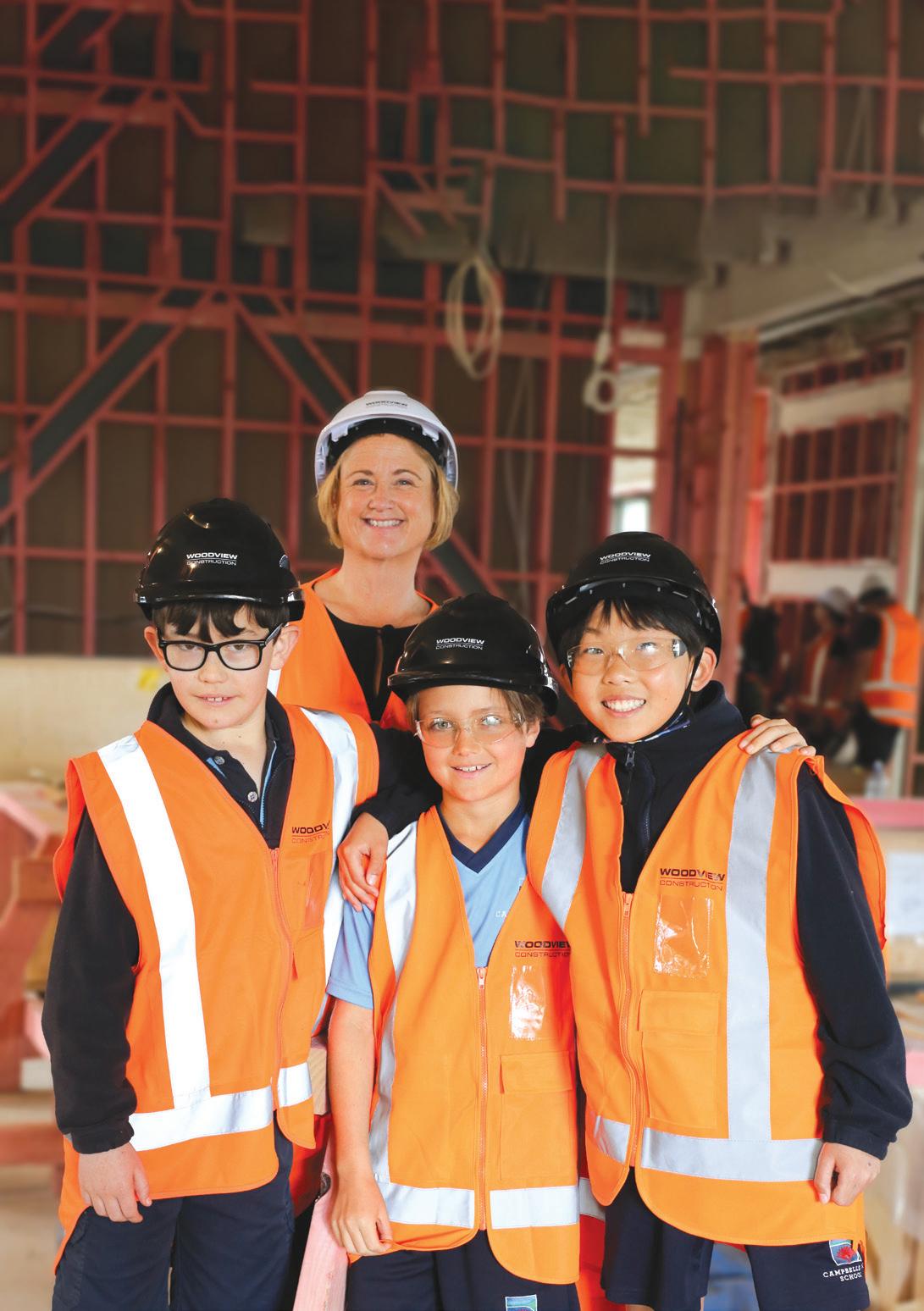
In Tāmaki Makaurau Auckland, a local construction contractor is rolling out an education programme at the schools they are working with, linking classroom learning to the practical building activities taking place onsite. And at the heart of this is former primary school teacher turned quantity surveyor, Bronny Apted.
Bronny Apted is a quantity surveyor with Woodview Construction Ltd in Auckland. For 38 hours a week she’s in the office or out at one of Woodview’s construction sites across the region – many of which are schools with new classroom blocks being built to meet roll growth pressures. But for two hours every Friday, Bronny goes back to her roots and can be found in front of ākonga with a huge smile on her face.
As part of the contracts Woodview has for Ministry of Education property projects, former primary school teacher Bronny collaborates with schools to link classroom learning to the practical building activities taking place on their sites.
Bronny’s role as a quantity surveyor centres on cost analysis and financial management, as well as a key relationship builder and an oracle of knowledge about anything and everything construction. But her passion for education lives on, and it’s palpable as she tells Education Gazette that the work she does at schools with building projects is one of the best parts of her job.
“I just love this part of my role. The new classrooms under construction at their schools give the kids a visual representation of what I teach,” Bronny says.
“Woodview truly values the relationships they develop with the schools over the period of time we are onsite building.
“With the current skills shortage in the construction industry, I see this as a real opportunity to get students thinking early on about all the different careers available to them in construction and how the subjects they are learning can be used in the real world.”
Construction links with curriculum Bronny undertakes eight lessons in each school. Drawing on her 10 years’ experience in education, she has developed a detailed teaching plan highlighting the steps involved in a new school building and the careers associated with this work.
The lessons are aimed at Levels 2 and 3, Years 5 and 6, and integrate achievement outcomes from Science, Mathematics, Technology, Social Studies and English.
Bronny spends the first lesson bringing the students on the journey of their new classroom build and describes all the people who contribute to getting classrooms designed, engineered, built and ready for learning. She touches on everyone’s roles – the construction site manager, the designers, the plumbers and electricians, and the Ministry of Education’s property staff, including the Capital Works delivery manager who runs the project for the school.
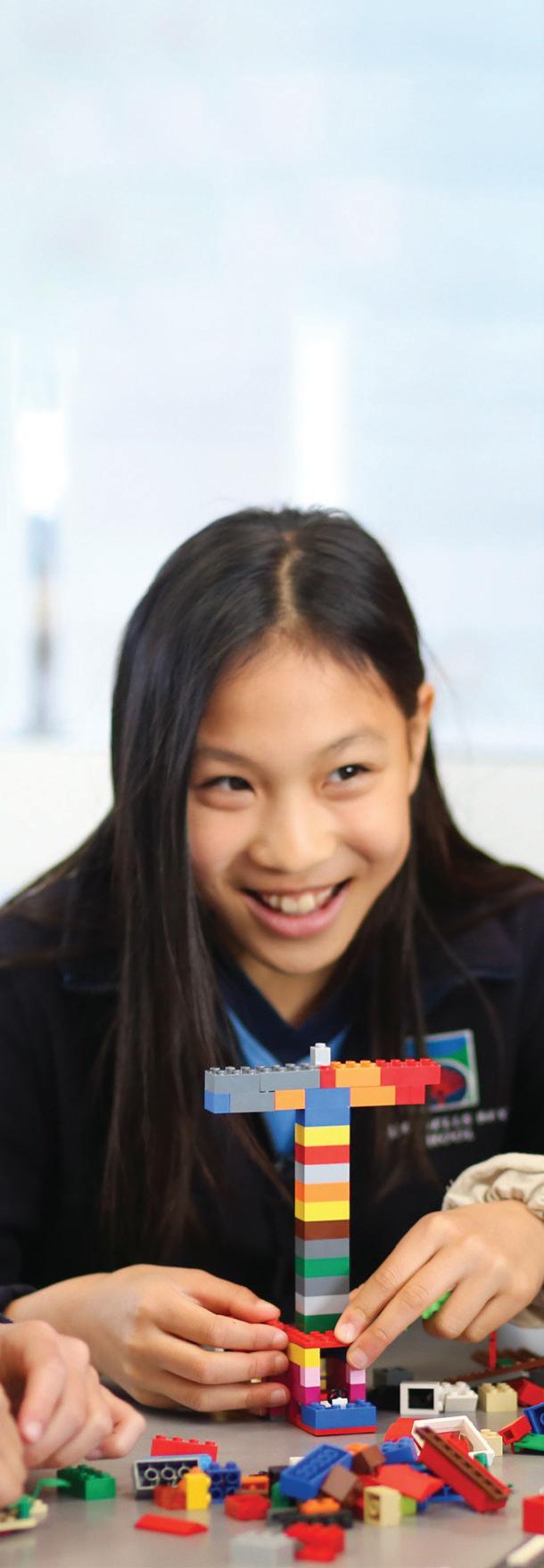
“With the current skills shortage in the construction industry, I saw this as a real opportunity to get students thinking early on about all the different careers available to them in construction and how the subjects they are learning now can be used in the real world.”
Bronny AptedCampbells Bay School student Gabriella.
The lesson about architects and designers explores how building design is developed and delivered for construction. Students spend the lesson designing their own classroom or house, measured to scale.
Bronny’s favourite topic is quantity surveying –she’s in her element as she sets the children tasks to work out how much building material is needed, what types and how much everything costs.
When looking at the role of engineers, students utilise their understanding of science and maths to build the tallest free-standing structure they can using only 60 sheets of newspaper, Sellotape, and ice block sticks. The tallest structure Bronny’s seen in class was over 1.7 metres high, and much of the success was down to the group communicating their ideas, trialling, and then reviewing and reflecting on the outcome.
Bronny also focuses on the construction of the build – from LEGO creations to the chemical reactions of different types of materials. She has the students spellbound, using activators to mimic the chemical changes that take place on the building site, such as the setting of concrete.
Finally, students are given the opportunity to do a walk-through tour of the construction site in full PPE to see the build taking place.
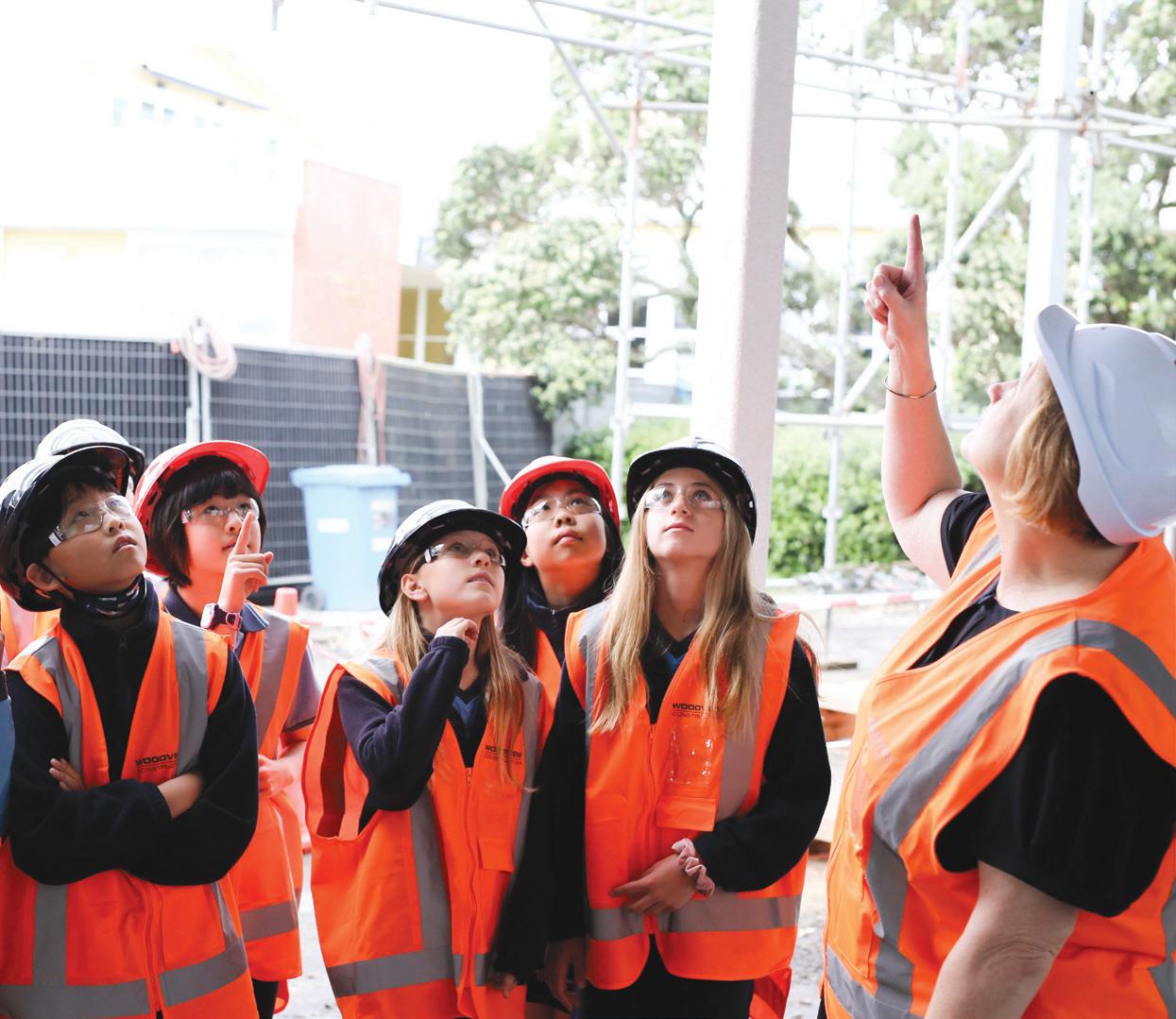
In the last lesson, Bronny reviews what the programme has covered and takes on feedback from students, their whānau and the school. She’s spent a term turning the school’s new building delivery into an educational experience, and she has given the students direct access to her expertise – something they would not otherwise have had. Some of these children will look back on Bronny’s lessons as they think about future careers in the construction industry.
The teaching plan for Bronny’s class aligns with the Government’s commitment to achieving the benefits of broader outcomes from procurement activity, such as environmental, social, economic and cultural benefits.
Bronny’s latest school placement has been with Year 6 students at Campbells Bay School on Auckland’s North Shore. The school is one of the largest primary schools in the country, and the roll is still growing. Woodview Construction is currently working onsite to build a new block with 14 teaching spaces, set to open next year.
The students learning about the ribs, skeletons and muscles of their new classrooms.
Recently, Bronny took a group of Year 6 students on a site walk-through of their new building which is the much-anticipated final lesson in a term’s worth of construction-focused classroom learning.

The visit demonstrates how engaged the students are with the building process taking place at their school, and how their knowledge of science, mathematics, technology, and design has been extended with real-life examples.
Bronny has a knack for keeping the children engaged and interested in some quite technical topics. On the tour, she ran through all elements of the building by comparing them to parts of the human body – an idea which came about at a site walk-through with a class of Year 5 students at Browns Bay Primary School.
» Steel framing is the ribs and skeleton of the classrooms.
» Timber framing shapes the building walls, keeping them strong – like our muscles.
» Service pipes and cables are the blood vessels and nerves for the building, sending messages throughout.
» The black box electrical distribution board is the heart, keeping everything pumping.
» The big data cabinet is the brain of the building –or is that ‘brain’ actually the children who will be learning in these new classrooms? (You can guess how the students answered that question!)
Giving engagement a lift Student Oscar is astonished when Bronny shows the group the lift that will be put together in the new classroom block. It wasn’t delivered in one piece as the students expected it to be. Instead, it is laid out in boxes.
The students see hundreds of different components that need mechanical engineering skills to piece together and get the lift ready for ‘passengers’.
“Bronny!” says Oscar. “Putting together the lift is going to be just like the LEGO we built. It’s like an older version of LEGO for adults!”
“Exactly Oscar,” Bronny explains, and the lesson quickly escalates to the technical aspects of mechanical engineering, with Bronny and Woodview site manager Jeremy showing the children where the lift would go and how it would be constructed in situ in the lift shaft.
Oscar, Year 6 (pictured right)
“Putting together the lift is going to be just like the LEGO we built. It’s like an older version of LEGO for adults!”
Students also learn about weights and pulleys, electrical wiring, how pressing the buttons will call the lift to the correct floor, how the doors will open and anything and everything in between. All eyes are on Bronny and Jeremy in amazement as ākonga take everything in.
Sarah Shankland, a Year 6 classroom teacher, is delighted her room was picked to be Bronny’s class for the term.
“The programme Bronny has put together is engaging for all, and she’s great at making things real and easy to understand for the students.
“She incorporates algebra, engineering and maths cleverly into her lessons – extending the learning of those students who need it but keeping things grounded
and relatable for everyone. For example, my class has been casually talking about tension and compression as they have undertaken magnificent LEGO builds with no instruction books. That was a highlight for me, to see their eyes opening to this style of learning.
“They’ve watched the new classroom block take shape at school and with Bronny’s help have learned so much about construction – and that there’s more to the industry than hammers and tools. I can see some of my students as future architects, site managers and of course some quantity surveyors just like Bronny!”
Now the build is drawing to a close at Campbells Bay School, where to next for Bronny? Well, she’s off to Windy Ridge School next term to do the same thing all over again.

The Foundation has been delivering positive outcomes in youth development and engagement for over 26 years.
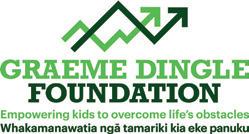
It’s amazing what tamariki and rangatahi can accomplish, often beyond their own expectations. And that’s why our programmes, working in partnership with schools, make a di erence - especially post lockdown where youth disengagement and mental health conditions appear more prevalent.
Our programmes include Kiwi Can, Stars, Career Navigator, Project K and Kiwi Tahi and have been proven to have a direct impact on building resilience, self-confidence and self-e icacy. Participating students have access to inspirational leaders and mentors when taking part in programmes that provide the skills they need to prosper.
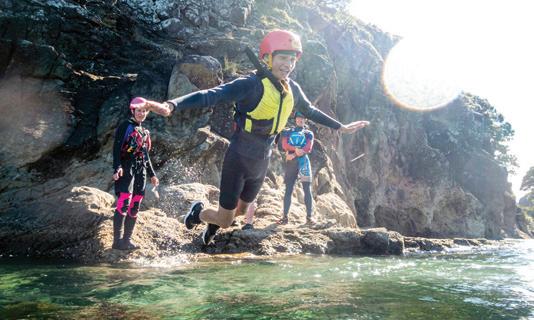
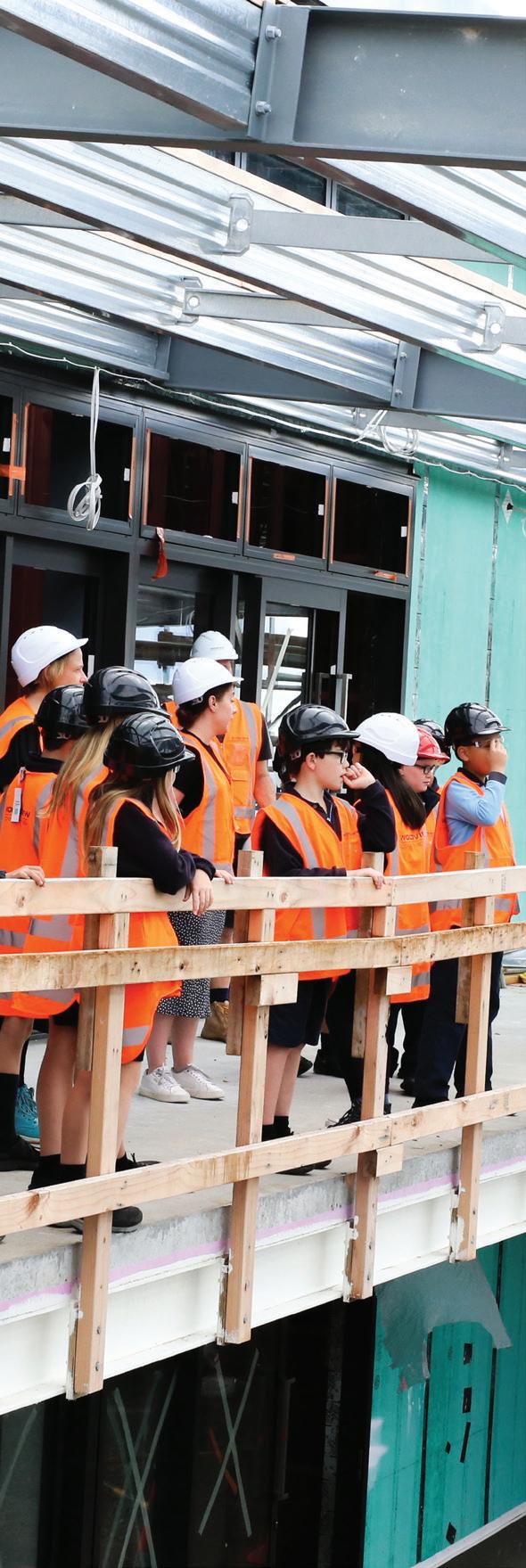
Kiwi Can is our primary school programme and is delivered to every child each week. To find out more about Kiwi Can, scan the QR Code.
Stars supports the critical transition into secondary school for Year 9 students using the tuakana teina approach alongside Year 12 & 13 Peer Mentors. To find out more about Stars, scan the QR Code.
Career Navigator assists young people to become work ready. To find out more about Career Navigator, scan the QR Code.




Project K is for students aged 14-15 with low self-e icacy. To find out more about Project K, scan the QR Code.




Our programmes are informed by best practice research thanks to our University research partners, showing markedly improved attitudes, behaviour, and academic results. We help tamariki and rangatahi boost selfconfidence and reduce truancy rates plus other at risk behaviours, helping participating students feel more positive about the future.
visit our website to see our latest research on youth disengagement.
information
programmes
 St Anne’s School Duffy Books in Homes coordinator Bobbie Smith and programme sponsors at a ‘role model assembly’.
St Anne’s School Duffy Books in Homes coordinator Bobbie Smith and programme sponsors at a ‘role model assembly’.
The Duffy Books in Homes programme has been running for 27 years, offering free books to ākonga across the country. St Anne’s School in Newtown is one school delighted by the programme.
“We get to keep these books,” says Anshul, who is in the Year 5–6 class at St Anne’s School in Newtown. Anshul is speaking about the free books that ākonga get through the Duffy Books in Homes programme, delivered by the Alan Duff Charitable Foundation. This year is special as, for the first time in 27 years, the Government are providing an extra book per year for students.
The foundation officially launched the programme in 1995 with 80 schools, 16,000 students and 14 sponsors. There are now 524 schools, 93,000 students and 241 sponsors. In 2007, Duffy launched into early learning and now has 263 early learning services receiving two book offers annually. The aim is to provide books for children who come from households less likely to own books, and to promote a love of books and family literacy through schools and kura. Funding is targeted to these students using the Ministry of Education’s Equity Index.
One school that has been part of the programme for 20 years is St Anne’s in Newtown, Wellington. The school was established 120 years ago and has a diverse community.
Duffy Books in Homes coordinator Bobbie Smith recounts, “We got an email saying, ‘Hey, look, we’ve got this new programme out for low decile schools, would you like to be a part of it?’
“My principal said yes. Then she came and saw me and said, ‘You are now the Duffy coordinator’. I said, ‘OK. What’s that?’ But I soon learnt.”
The process involves distributing brochures to students to choose what books they want. For junior students, teachers will help them to select books suitable for their reading level. The orders are then put online. When the books arrive Bobbie will create labels to go into the books, which have the child’s name, the fact it came from Duffy books, and the name of the school sponsor.
The books are usually distributed in combination with a role model assembly, where someone will come in to talk about the joy of reading and what they do. Due to Covid-19, the school had not been able to have in-person role models until recently when Judi Billcliff, a children’s writer and performance poet based in Hamilton, came to speak.
“Judi was amazing. She had the children so engaged from the first minute. She had them laughing and she was great. Then the books were taken back to the classroom and given out for the students to enjoy them,” says Bobbie.
This happens three times a year. In terms 1 and 3, students can order two books. Term 2 is sponsored by the Government and usually there is only one book but this year that increased to two books.
“I think it does improve their reading skills. Often, they are engrossed in the books in the days after receiving them.”
Emily Dickie
As well as the ordered books, there are other books that are given away for ‘Caught Being Good’ awards. These awards go to students, parents and caregivers for Mother’s and Father’s Day, and grandparents for ‘Caught Being a Good Grandparent’ – reinforcing the concept of family literacy. Though as Bobbie says, the award does not have to be for reading skills.
“The awards can be for anything, for example a new entrant sitting on the mat for more than 10 minutes. For seniors, it might be getting the work done on time. It’s anything that stands out as ‘hey, that was a good thing you just did’.”
The students love being able to get the books, and the teachers can see the benefits of them having their own books.
Emily Dickie, a Year 5–6 kaiako says, “I think it does improve their reading skills. Often, they are engrossed in the books in the days after receiving them.”
Anita Tufuga, Year 3–4 kaiako, adds to this, saying, “I think this has enhanced their reading mileage and helped them with new vocabulary.”
Another activity that is enjoyed is the Duffy Theatre. Every year, two groups of actors travel around Aotearoa to bring the message ‘It’s Cool to Read and Cool to Achieve’. The original shows are 45 minutes long.
Some prior productions have included Duffy Meets a Coggen, Duffy and the Cloakbay Bully and Duffy – Stuck in the Game! As the titles suggest, they centre on the ‘Duffy’ character.
St Anne’s have seen the productions, and had seen one on the same day as when the school was invited to be part of the 25th anniversary of Duffy Books in Homes at Government House. The ceremony had Alan Duff present, but also the actor playing ‘Duffy’. The children were highly excited that they were able to meet Duffy for the second time in one day.
Funding partners are an important aspect of the scheme, as they share the cost of being able to distribute the books.
St Anne’s appreciate their sponsor, Greenwood Roche Project Lawyers, who not only sponsor Duffy books but will also do small office fundraisers to help the school with other costs.
They enjoy being seen as a part of the school, and Bobbie says, “When Judi, our role model, was here the other week, she said it was amazing to see them [the sponsor] because she goes to a lot of schools as a role model and does not often see sponsors at an assembly.”
The entire programme brings joy to students. As Matt Kolic, a Year 6–7 kaiako says, “Duffy Books in Homes provide a great opportunity for our students to engage with new books throughout the year.
“The students have the sense of ownership as they get their books and a sense of responsibility and freedom as they are able to select the books they wish.”

“Duffy Books in Homes provide a great opportunity for our students to engage with new books throughout the year. The students have the sense of ownership as they get their books and a sense of responsibility and freedom as they are able to select the books they wish.”
Matt KolicJudi Billcliff, a children’s writer and performance poet, speaks to ākonga at St Anne’s School.
Students at St Anne’s share their thoughts on Duffy Books in Homes.
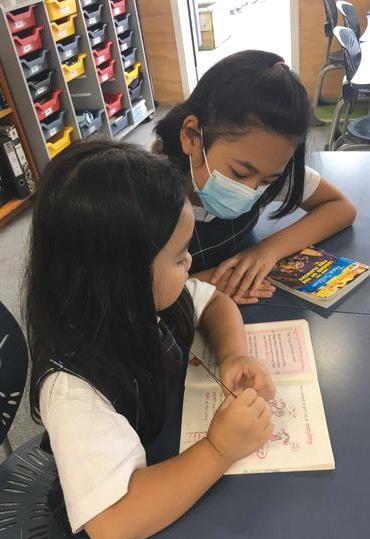
Blen: “Reading rocks.”
Lina: “Reading helps you learn.”
Luca: “Reading is awesome.”
L.J.: “It’s fun to read.”
Amen: “It’s good and engaging to your brain.”
Juanita: “Reading makes you feel cool.”
Deborah: “Reading makes me want to make my own book.”
Hatesa: “Reading is cool because you can get creative with your mind.”
Aiden: “Love getting Duffy books because they are free, and you always get new books to read.”
Niko: “The free books help me learn new things.”
Mya: “Duffy books are nice because they are new and they are mine to keep.”
Awards of books are also given for ‘doing good’.

Government education agencies are working on a new digital and data strategy outlining a shared view of digital education in Aotearoa New Zealand for the coming decade.
“Hybrid learning is turning teaching into the ultimate team sport. Teachers can no longer do it alone. Individual players must use the skills and knowledge they possess to contribute to the larger team to ensure success for each and every student.”
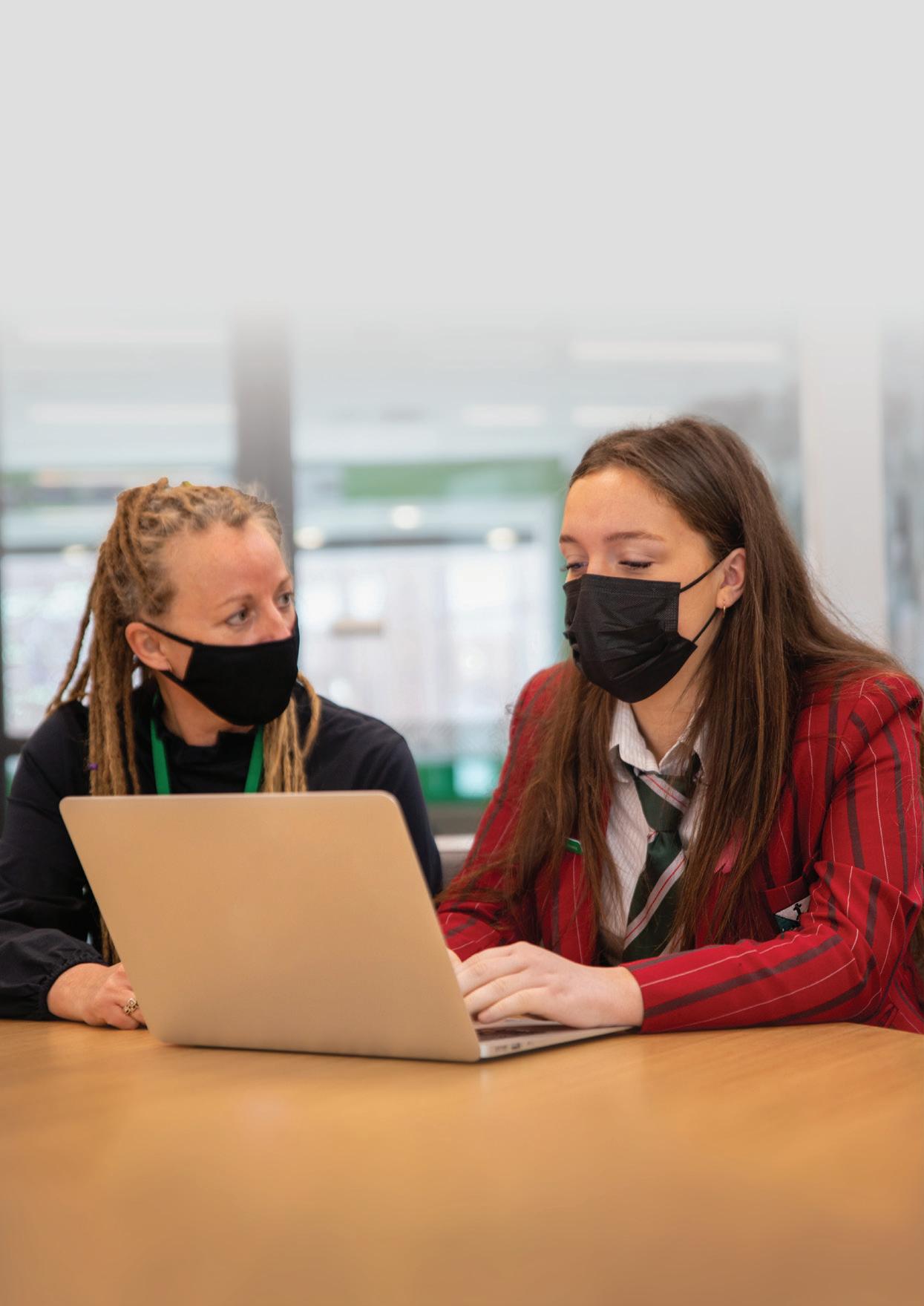 Michael Earl
Michael Earl
After the experience of lockdowns and continued absences caused by Covid-19, Avonside Girls’ High School | Te Kura Kohine o Ōtākaro found that with careful planning and good use of resources, skills and ICT Infrastructure, they could powerfully advance their commitment to become pandemic-ready through hybrid learning.
“We began by working closely with staff to outline the rationale for hybrid learning. We delved into practices around hybrid learning at staff meetings and department meetings,” says deputy principal Liz McDowell.
The school discussed the benefits of a unified response using their well-established digital platforms of Office 365, Teams and OneNote and agreed a path forward.
“We experienced hybrid learning as a staff, moving to virtual meetings through Teams and establishing a staff Teams group with a specific hybrid learning channel. We provided online resources for staff and our eLearning integrator worked with staff who wanted extra support.”
School leaders and kaiako worked closely with students and the community through the process and talked about the why.
“Our daily loan devices for learners became term loans and we witnessed growth in student agency in learning.”
The school created a hybrid learning structure and changed KAMAR, their student management and timetable system, to reflect this agency and for ease of student use.
They also moved to a day on, day off model (two days onsite, three days learning from home) in the first iteration.
Wednesdays became ‘Wellbeing Wednesday’ for pastoral care and pouako weekly check-ins with students and whānau. Social media and the school website were used for messaging and updates.
“We sought feedback halfway through the five-week hybrid learning model from staff, students and whānau.”
Avonside Girls’ are but one example of digital and data approaches to teaching and learning, particularly driven by Covid-19.
The value of teamwork and buy-in from staff, students and whānau for effective digital learning is a sentiment also shared by Michael Earl, principal of Ōrākei School.
He says collaboration is essential to quality hybrid learning. Whether it is simply between two teachers or between schools, or clusters of schools, collaboration is essential if hybrid learning is to be sustainable.
“Hybrid learning is turning teaching into the ultimate team sport. Teachers can no longer do it alone. Individual players must use the skills and knowledge they possess to contribute to the larger team to ensure success for each and every student.”
Ōrākei and Te Roopu Pourewa Kāhui Ako, which is made up of Ōrākei, Kohimarama, Stonefields and St Thomas School, collaboratively developed an online learning programme to support hybrid learning which was made available to students at any of the four schools.
The kāhui provided a digital distance approach where students use both a device and connectivity to engage with learning on a digital platform (Zoom, Google, SchoolTalk).
All students need a device with a functioning camera for Zoom. Onsite teachers consistently use SchoolTalk to share calendars with students and online learning staff. Hence, a shared kāhui ako learning management system was important for this collaboration to work.
Collaborating to provide hybrid learning enables the kāhui to share strengths across their schools and creates the potential for the practice of hybrid learning to be doable and sustainable at a time of significant stress and pressure.
Like Avonside Girls’, Ōrākei and Te Roopu Pourewa Kāhui Ako acknowledges and utilises ākonga voice throughout implementation, ensuring that the platform adjusts to reflect evidence.
Earlier this year, Education Gazette spoke to Te Poutāhū chief advisor Lesley Murrihy about how successful hybrid learning leverages technologies to provide continuity of quality learning for all students, no matter when, where or how.
Revisit this article, and more examples of hybrid learning, at gazette.education.govt.nz.
To read more about Avonside Girls’ High School’s experience, visit learningfromhome.govt.nz.
Left: Avonside Girls' High School deputy principal Liz McDowell with a student.
Education agencies are working on a strategy to address the benefits and possibilities of digital and data approaches for teaching and learning, so learners and whānau, educators and providers can flourish in the digital future.
Digitally fluent and literate people are equipped to learn, live, and work, contributing to personal fulfilment, job opportunities, and the nation’s growth.
This strategy is the work of the Ministry of Education, Tertiary Education Commission, New Zealand Qualifications Authority, and the Network for Learning and related education entities, to outline the aspirations and priorities for digital and data in education – from early childhood to tertiary and beyond. Shared principles and aspirations for digital and data will help guide education agencies’ decisions and investments over the coming decade.
Insights and understanding have come from discussions and research with partners and stakeholders across the education community and beyond over the last 18 months, helping inform the final strategy.

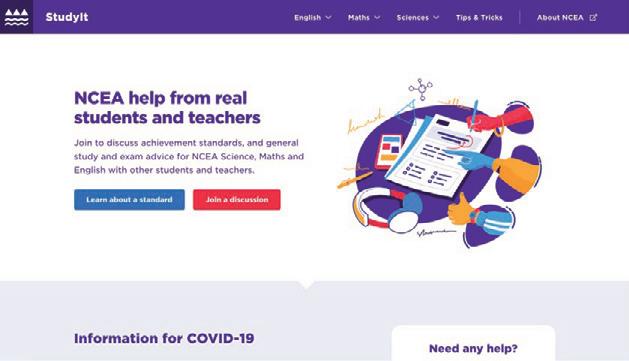
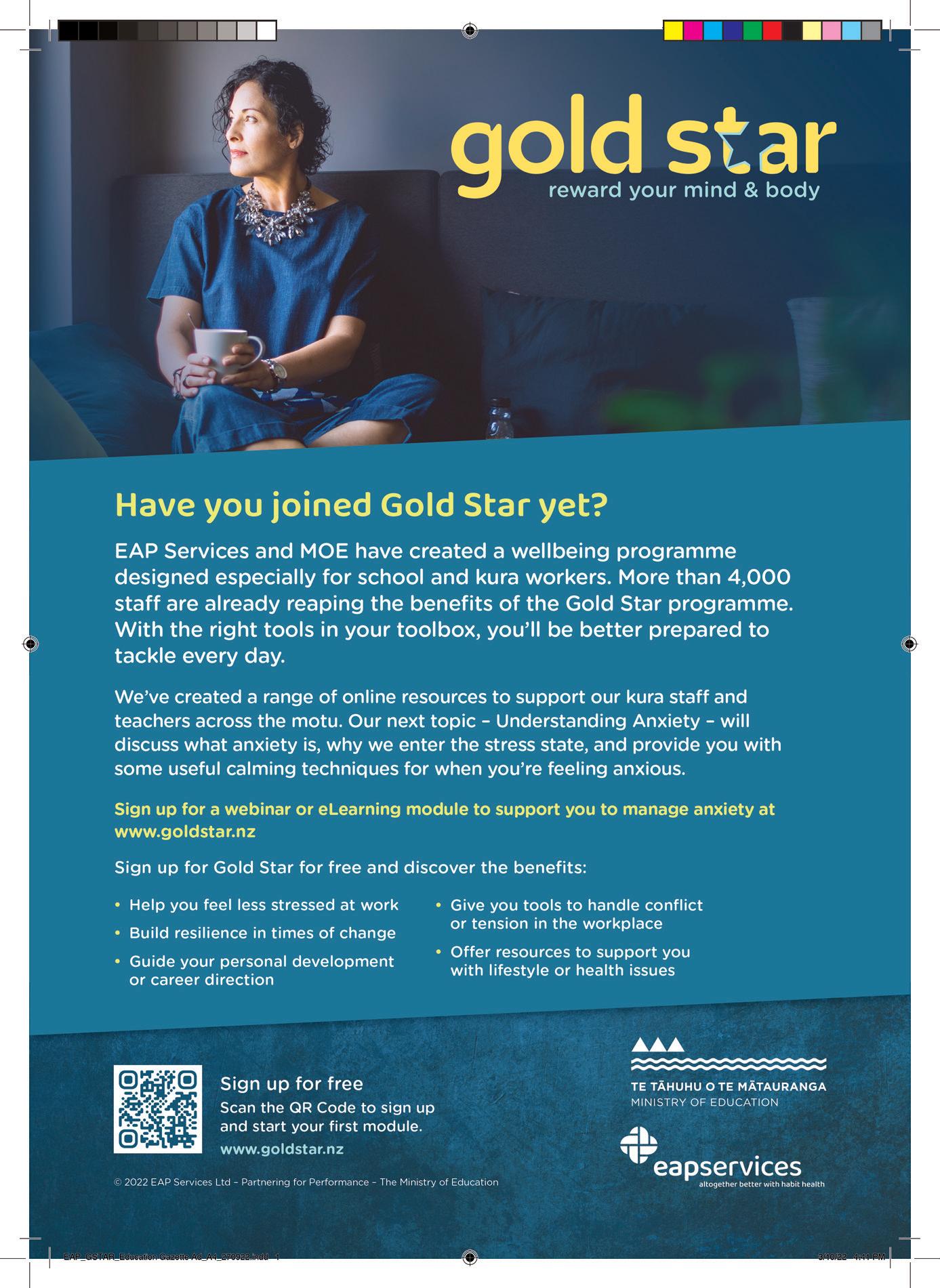
Caretaker's or parents make the game for Kindergarten to Primary schools students.
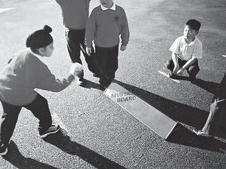
How to make the Nivsta Board YouTube video footage: www.nivstaboards.com/nivsta-know-it-all-book includes 4 sets of rules and 22 fun activities.
Email Mark Dalzell, nivstaboards@gmail.com with any questions and feedback.
– Tihiraki North Loburn School
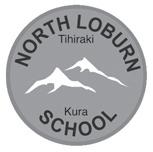
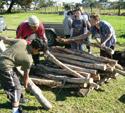
» Exciting opportunity to lead a school of excellence in a rural community
» Stunning environment in supportive community
» Flag ship Green-Gold Enviroschool
North Loburn has a reputation as a school of excellence, supporting innovative and quality teaching to maximise student achievement.
We are looking for a professional leader who sets high standards and has a proven track record of school management and leadership.
This is an exciting opportunity for an enthusiast and energetic leader to lead a school which is well positioned for the future.
Applications close on 31st October. For more information contact Madeleine Hawkesby at 021 495993 madeleine@hawkesbyandco.co.nz and you can find the listing and application pack on the vacancies section in the Education Gazette.


Our dedicated principal of twenty-one years is retiring, and we are seeking a worthy successor to replace her.
We are an innovative full primary school with a roll of 115 students. We are situated in the rural town of Te Kōpuru, 10 kilometres south of Dargaville. We are a whānau-oriented school known for providing a culture of inclusiveness, collaboration, and high achievement.
Application packs are on the KEA website: www.keaeducation.nz.
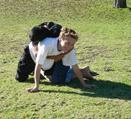
For the essential application form email Ngaire on Ngaire@keaeducation.nz.
listings
We are seeking someone who is a competent leader, has strong personal and interpersonal skills, excellent curriculum knowledge, proven ability to lead learning, and has a welldeveloped child-centred education philosophy.
We are seeking an experienced, highly motivated, and energetic leader who will embrace the journey we are currently on and be committed to our school and community vision for our young people.
To visit the school by appointment email: office@tekopuru.school.nz. For questions on the process phone or email Terry Hewetson HEDSOL an affiliate of KEA 0212719001 terry.hewetson@gmail.com
Scan the QR codes with the camera on your device.
Te Ao Māori has a clear presence in our school culture and there is a warm and supportive relationship with whānau.
We are committed to supporting the school’s bi-cultural curriculum.
This is an exciting opportunity to join a vibrant and creative school with strong values, a dedicated and professional staff, a supportive community, and School Board.
The closing date is 31 October 5:00 pm.
Interviews are on Saturday 26 November 2022.
Starting date is Term One 2023.
Newton Central School is a U5, Decile 7 (as of 2023 equity index 403) Tiriti-based primary school of just over 300 students operating in a vibrant and diverse community in the urban setting of Central Auckland. The school strives for quality teaching and learning and is committed to all tamariki reaching their fullest potential through educational excellence. Newton Central has received national attention for its progressive and innovative efforts to embed Te Tiriti o Waitangi within the core of its philosophy, governance and practice.
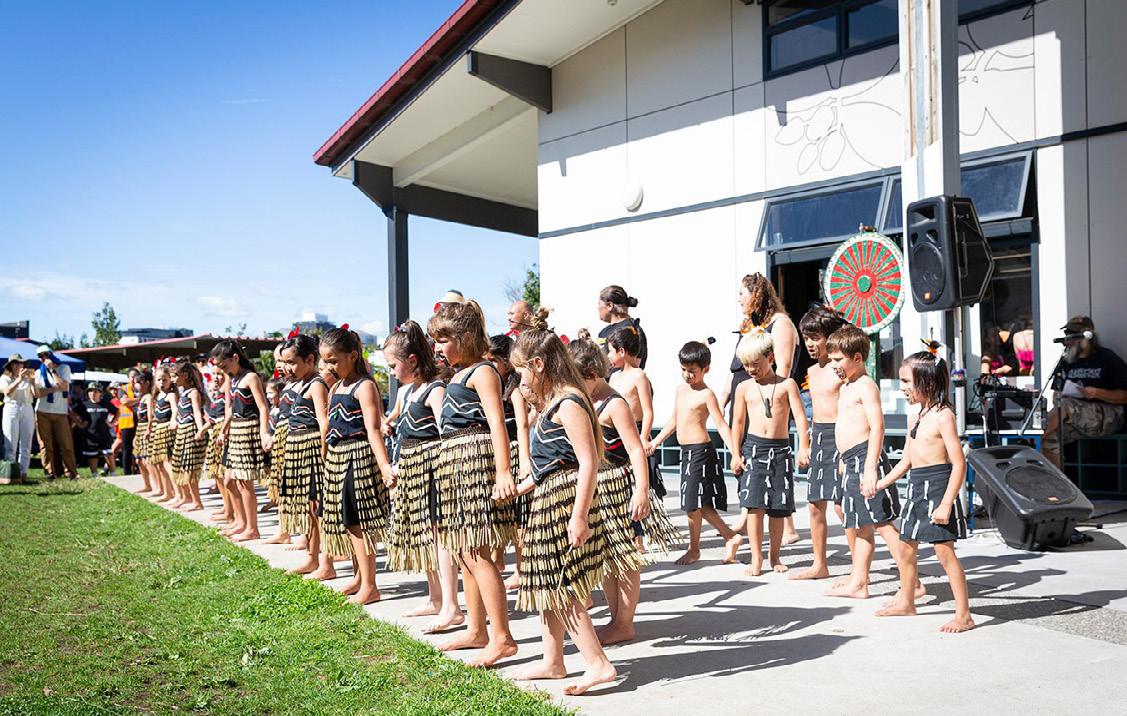
We are seeking a leader who has the understanding and ability to walk in both mainstream and Māori worlds and continue to strengthen our bicultural traditions and critical, Tiriti-based curriculum, teaching and learning. In this role, you will be expected to exemplify Aroha Mai, Aroha Atu through Whanaungatanga, Kaitiakitanga, Rangatiratanga and Manākitanga with all kaimahi, whānau, hapū and iwi. This position can offer you the opportunity of a lifetime to demonstrate your expertise in leadership, educational pedagogy, day to day management and interpersonal skills within a unique primary context. If you have always felt within your heart a desire to lead and serve within a cutting-edge school community that embodies te ao Māori, tikanga and te reo while fostering high student performance for all then we strongly encourage you to submit your application.
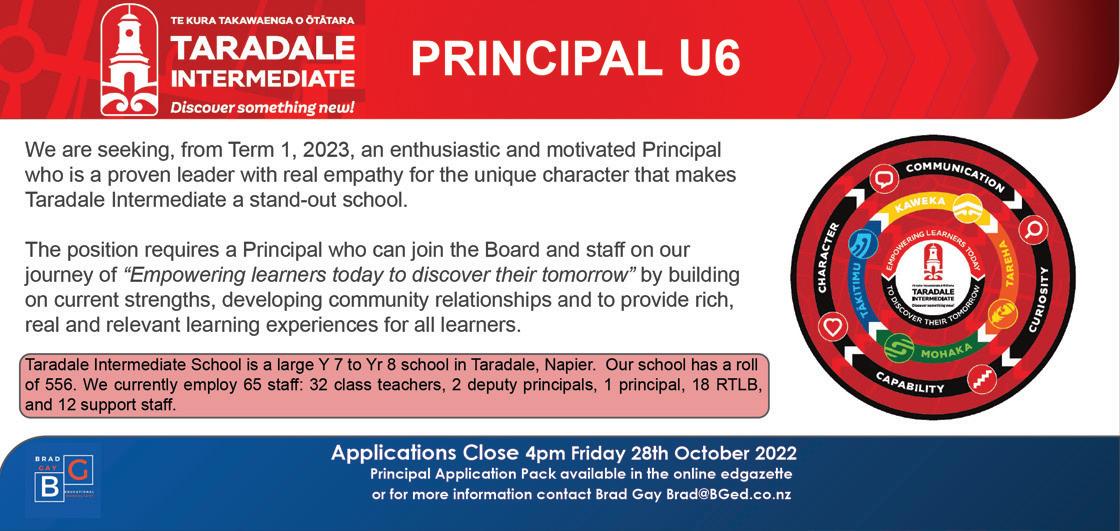
Applications close midnight 31st October. Visits and questions anytime are encouraged. Please email Laurayne Tafa for enquiries or an application pack tafaed3@outlook.com

Toroa e, whakapai tangata huia e, huia kotahi.
Kei te rapu mātou o Te Kura a Rito o Newton Central i tētahi tumuaki pūmau.
He kura U5, he taumata tuawhitu (Decile 7). He kura e whakakaupapa ana i Te Tiriti o Waitangi. E rua hoki ngā whānau reo Māori e noho mai nei ki tēnei kura, arā, ko te whānau reo rua o Te Awahou me te whānau reo rūmaki o Te Uru Karaka, e pupuru ana i ngā mātāpono o Te Tiriti o Waitangi, te reo Māori me ōnā tikanga hoki.
Tōnā toru rau tamariki nō ngā ahurea tuatini e kura ana ki te pokapū o Tāmaki nei. E ū kaha ana te kura nei kia tino kounga ai ōnā akoranga, ā, kia eke pānuku ai a rātou tamariki ki a rātou tino pito mata mā roto mai i te kairangitanga o te mātauranga.
Me ū tonu kia whakapakari i ngā tikanga o ngā ao e rua, i ngā marautanga o Te Tiriti mā te whakaako me te ako hoki. Ko tētahi o ngā whainga kia tika ai, kia pono ai te kaitono kia kaua hoki e mataku ki te paihere i ngā whitau o te whānaungatanga ki waenganui i ngā kaimahi, whānau, hapū me ōnā iwi hoki. Mā tēnei tūranga tino angitū e whai wāhi ai te tangata ki te whakaū i ōnā pukenga amorangi, kaupapa akoako, te whakahaere i tētahi kura tuatahi motuhenga rawa nei. Mehemea kua noho te komaingotanga ki roto i a koe ki te whakahaere me te mahi mā tētahi hapori kura matahōu e whakatinana ana i te ao Māori te reo me ngā tikanga Māori hoki. Me kaha whakawhanake te tangata nei i te pikitanga o ngā akongā ki ngā paerewa tiketike o te mātauranga a motu, tēnā ka kaha tā mātou akiaki i a koe kia tukua mai e koe tō tono.
Ka kati ngā tono ā te mutunga rā o 31 o Whiringa-ā-nuku. Haere mai ki te kura titiro ai, nau mai ki te kōrerorero mō te turanga nei, tukua mai rānei ōu pātai. Imera mai ki Laurayne Tafa mo ngā pēpa tono ki tafaed3@outlook.com
Toroa e, whakapai tangata huia e, huia kotahi.

